Norwegian landscapes are famed not just for their dramatic vistas and the Northern Lights but also for showcasing some of the best stave churches in Norway.
These architectural treasures from the Viking Age are not merely places of worship but are deeply woven into Norway’s myths and cultural heritage.
Against the backdrop of Norway’s dramatic fjords and under the dance of the Aurora Borealis, these ancient wooden structures offer a glimpse into medieval Norwegians’ spiritual and everyday lives.
In this guide, we showcase the ethereal beauty and intricate designs of Norway’s stave churches, exploring why these fascinating sites continue to captivate visitors from around the globe.
For the last few years, we’ve lived in the picturesque village of Skudeneshavn, Norway, and road-tripped around the country, seeking out the best stave churches. We’re excited to share our firsthand insights with you.
Best Stave Churches in Norway: Quick Overview
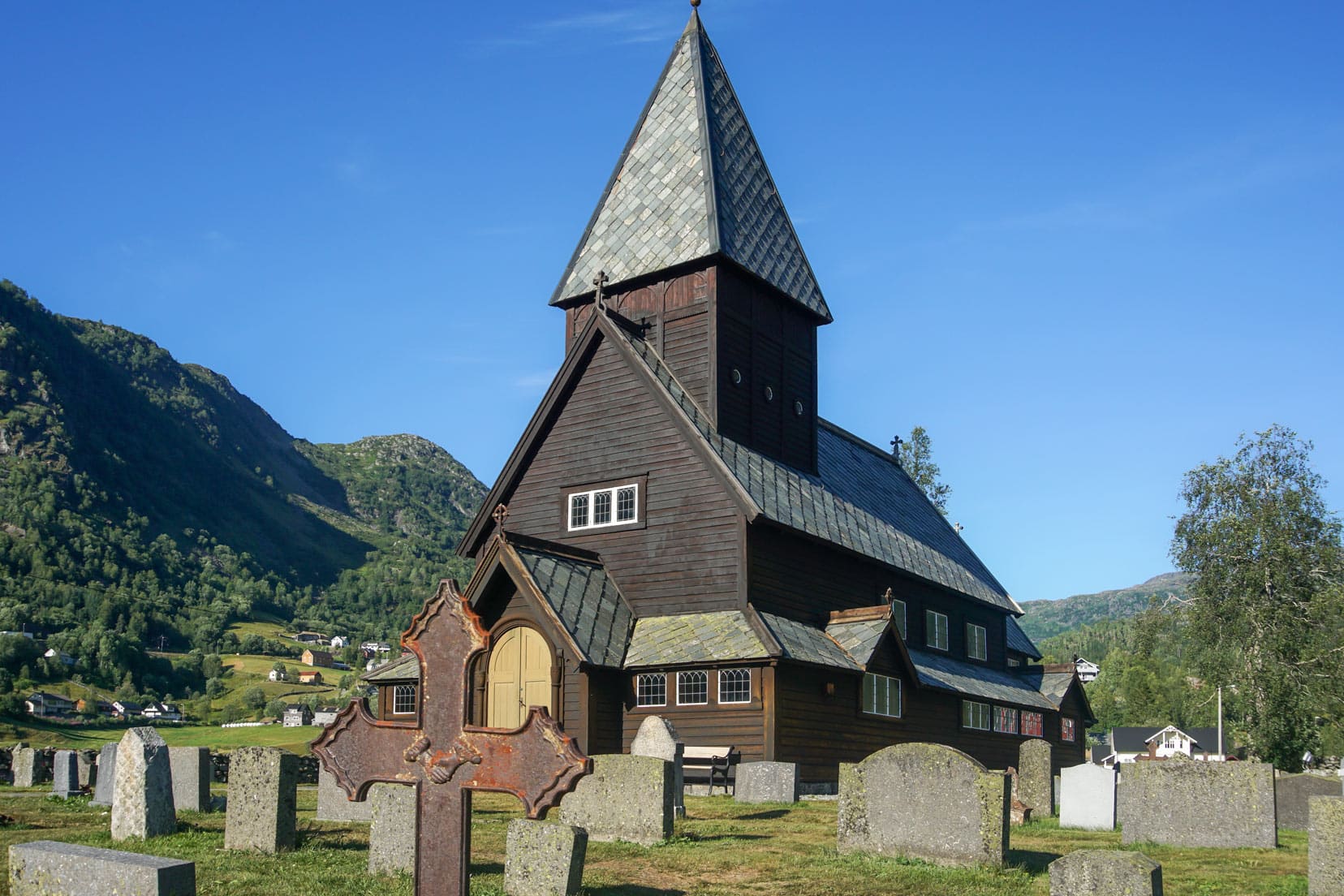
Røldal
Røldal Stave Church, renowned for its healing crucifix and beautiful location, has been a vital pilgrimage site since its construction around 1250.
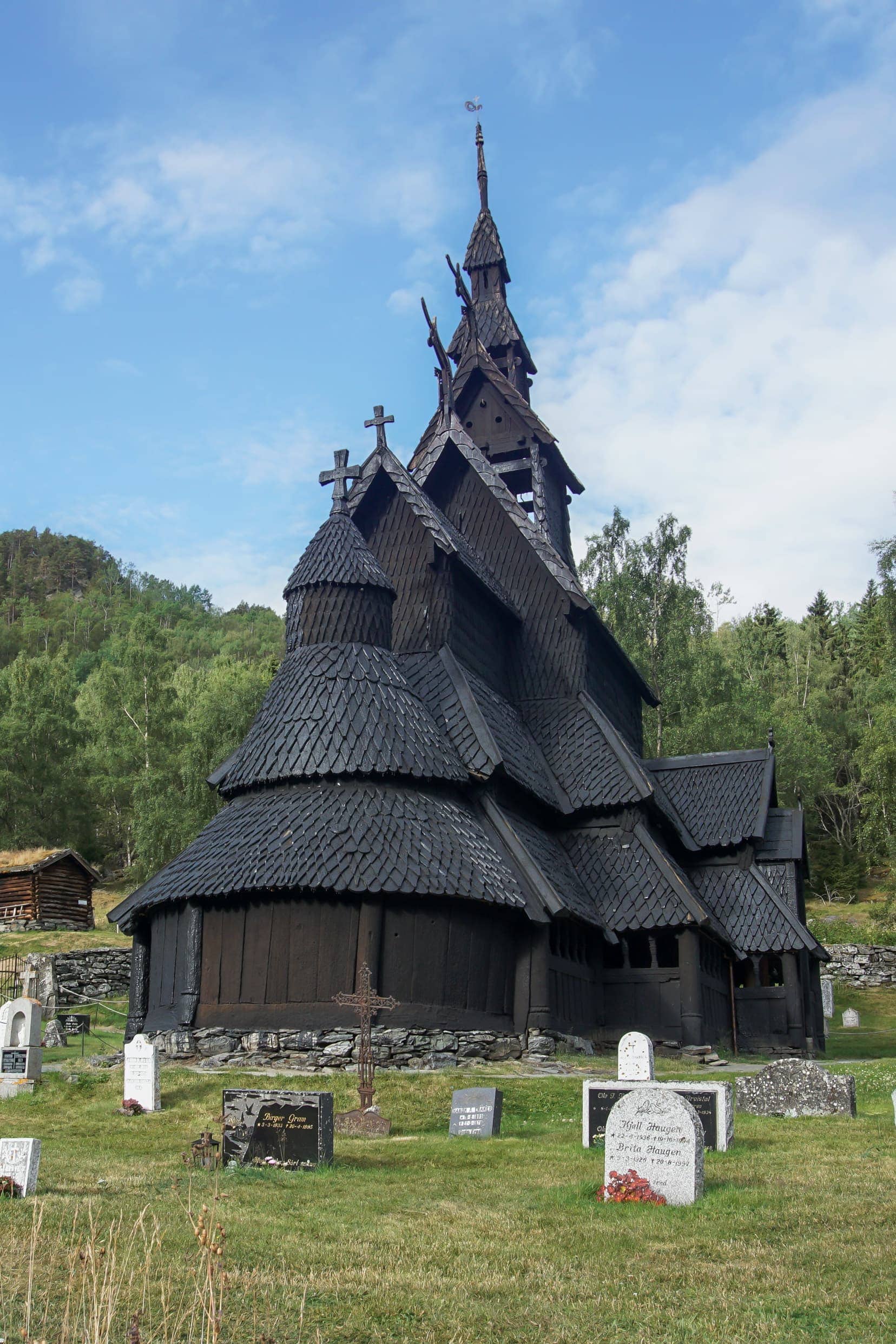
Borgund
Borgund Stave Church, built around 1180, is one of the best-preserved stave churches in Norway, famous for its intricately carved portals and dragon head adornments, serving as a historical model for stave church preservation.
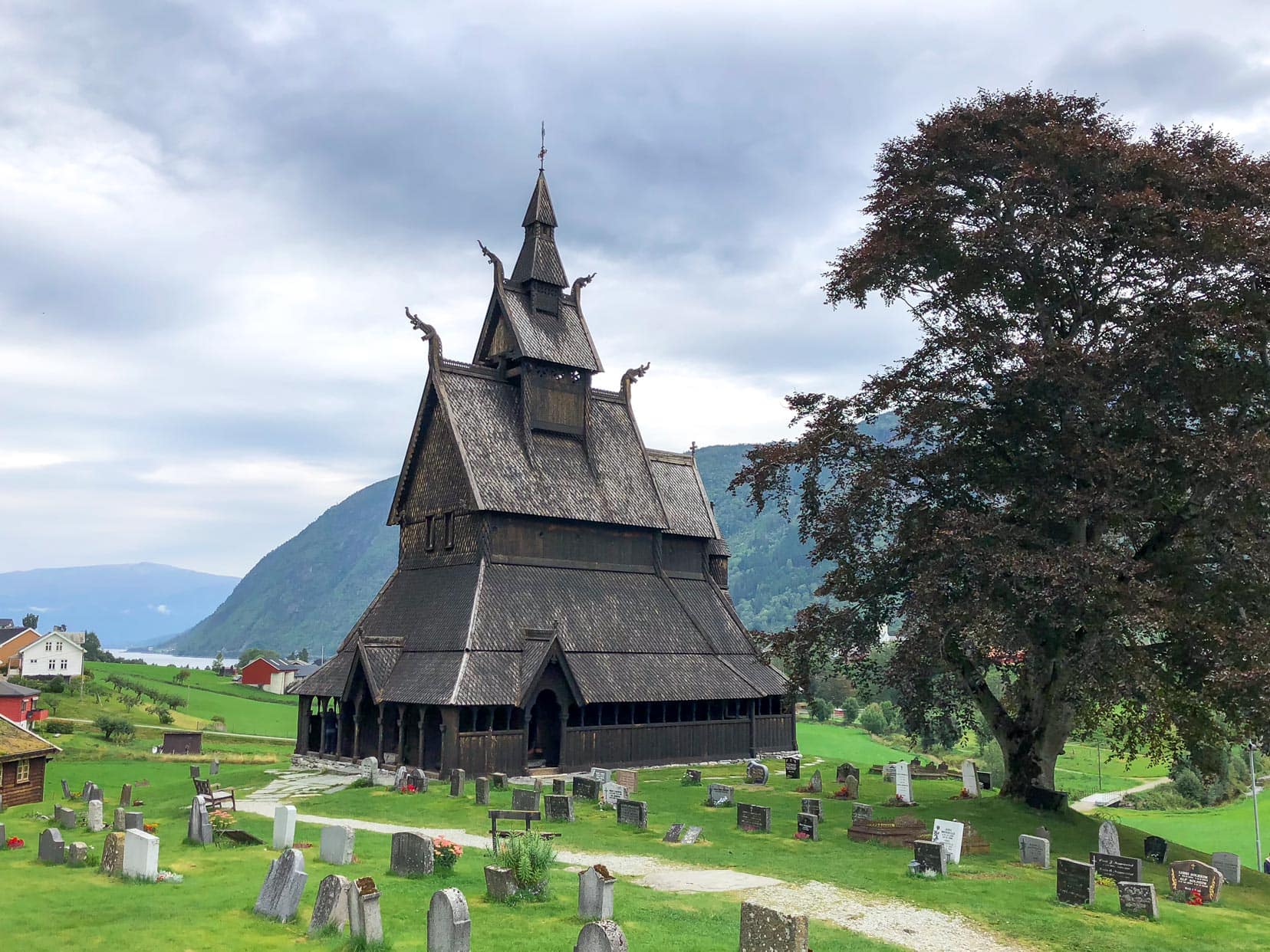
Hopperstad
Hopperstad Stave Church, constructed in 1130, stands out with its panoramic views overlooking Vikøyri and Sognefjord, featuring iconic dragon head decorations and an interior that resembles an inverted boat.

Heddal
Heddal Stave Church, constructed in 1200, is Norway’s largest stave church, boasting a rich interior with myths of Sigurd the Dragon Slayer and uniquely carved doorways directing towards compass points.
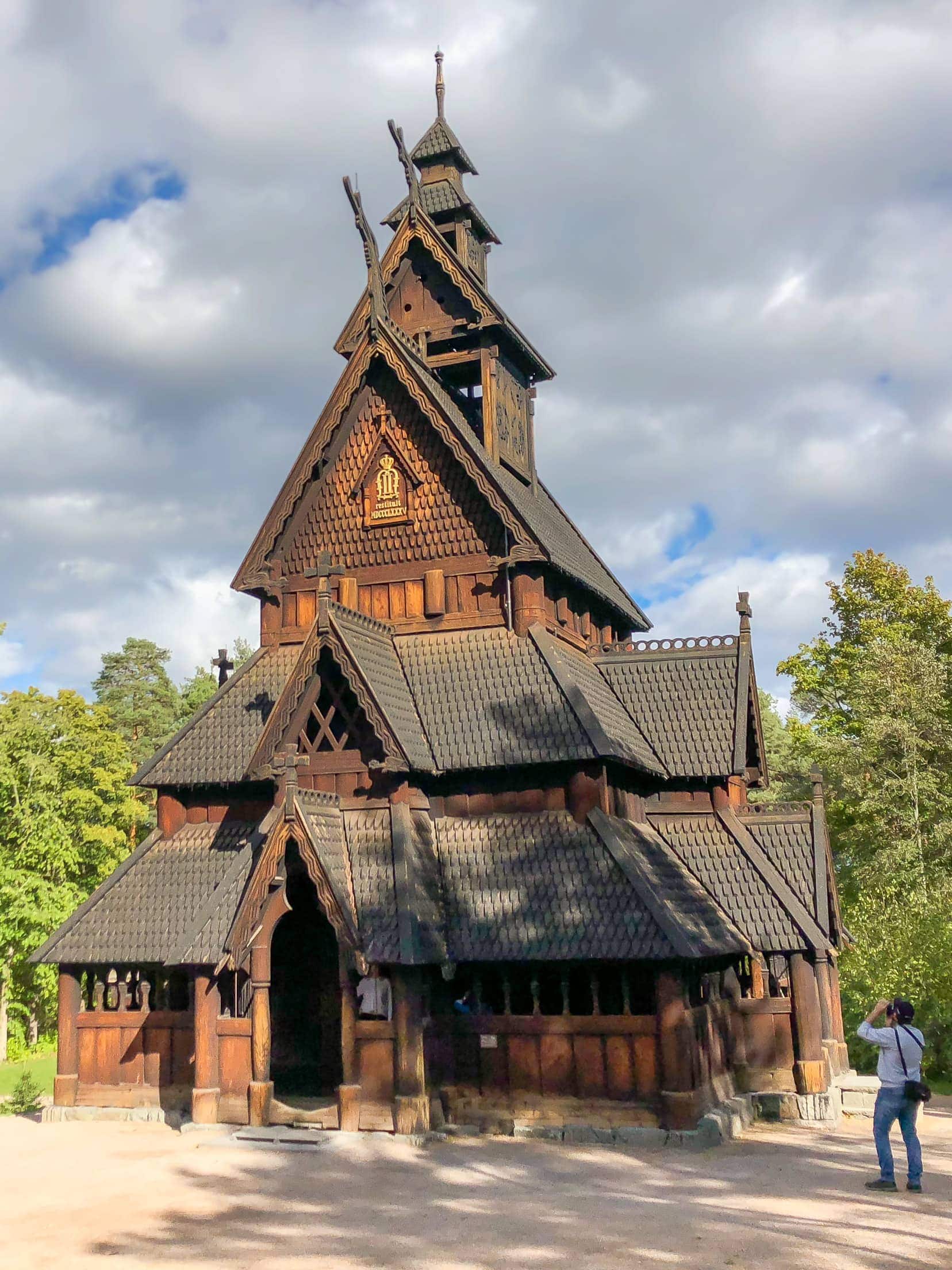
Gol
Gol Stave Church, originally from Gol and rebuilt in Oslo around 1200, is now a museum piece at the Norwegian Museum of Cultural History, showcasing traditional Norwegian architecture and craft.
What’s Included in this Post?
Stave Churches Norway Map
How to Use This Map:
- To use this interactive map effectively, click the square icon in the upper right corner to expand.
- A key will appear on the left, guiding you through various locations.
- Stave churches are marked with a purple marker. (🟣)
Why Visit the Stave Churches in Norway?
Visiting stave churches in Norway offers more than just a glimpse into the country’s architectural past; it’s a journey through the myths, culture, and history that has shaped Norway.
These wooden churches, unique to Norway, showcase the Vikings’ intricate craftsmanship and deep connection to nature. Carved into the wood are pagan symbols and Christian motifs that reflect their spiritual beliefs.
Exploring these churches allows you to experience the majestic landscapes in which they sit and reflect on the beauty of the detailed carvings and unique construction that highlight Norway’s cultural heritage.
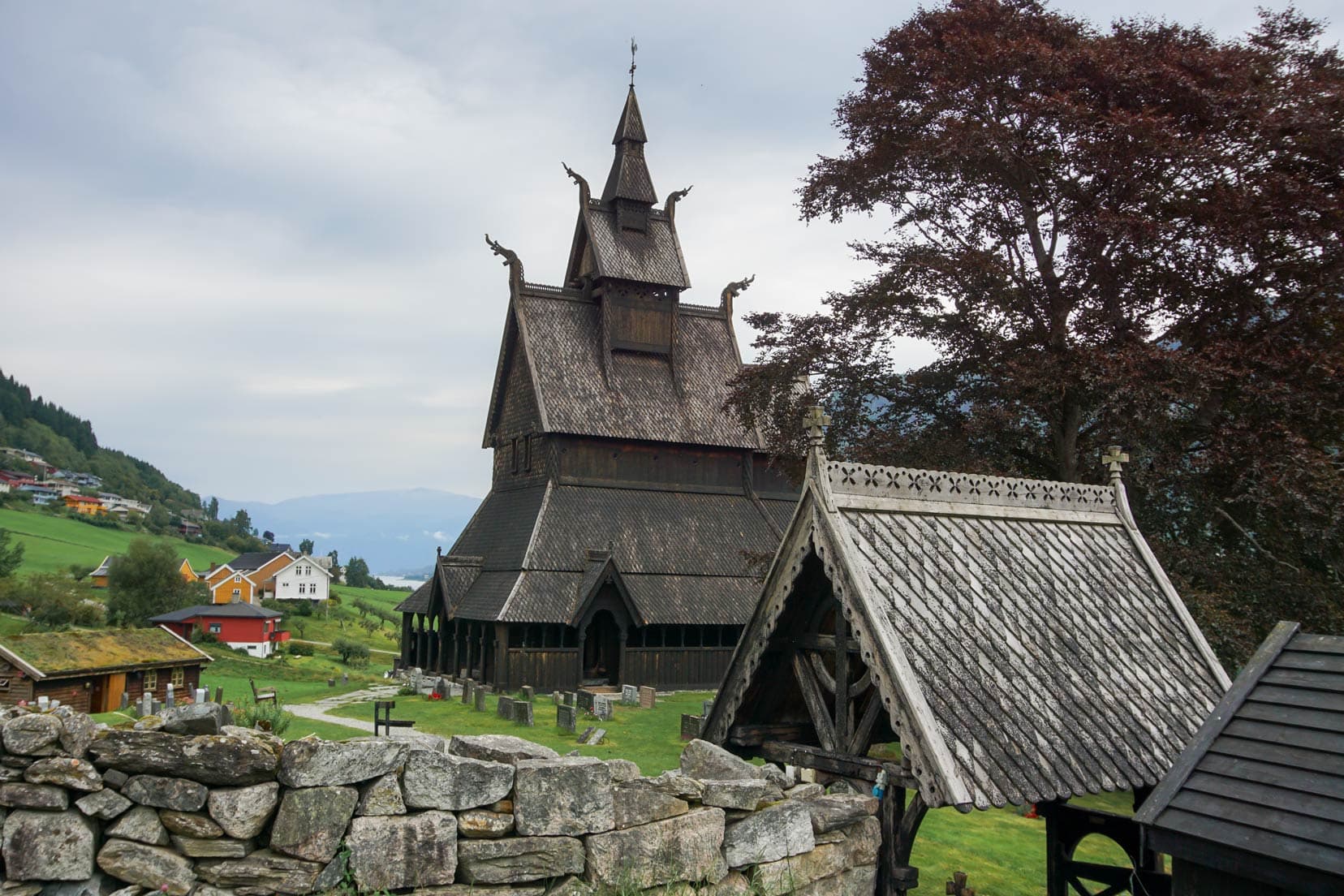
Planning a Trip to Norway?
- 🚗 Hiring a car? We recommend getting a quote from DiscoverCars
- 🚐 Hiring a campervan? We recommend Motorhome Republic
- ⛑ Arranged your travel insurance? Compare quotes from World Nomads & Safetywing
- 🪪 Order your International Driver’s Licence online here
- 🏩 Booked your accommodation? We use Booking.com to find the best deals
- 🐾 Is someone pet-sitting for you? 🐾 We use and love TrustedHousesitters
- (Get 25% off at checkout for new memberships with our discount code: LIFEJOURNEY25)
How Many Stave Churches are left in Norway?
Norway is home to most of the remaining stave churches, with 28 out of 31 located within its borders. Sweden, Poland and the U.K. each have one historical stave church.
England’s St. Andrews Church in Greensted is often regarded as the oldest wooden church in the world and the oldest ‘stave-built’ timber building in Europe, dating back to around 1060 AD.
The images below show the locations of Norway’s 28 remaining stave churches.
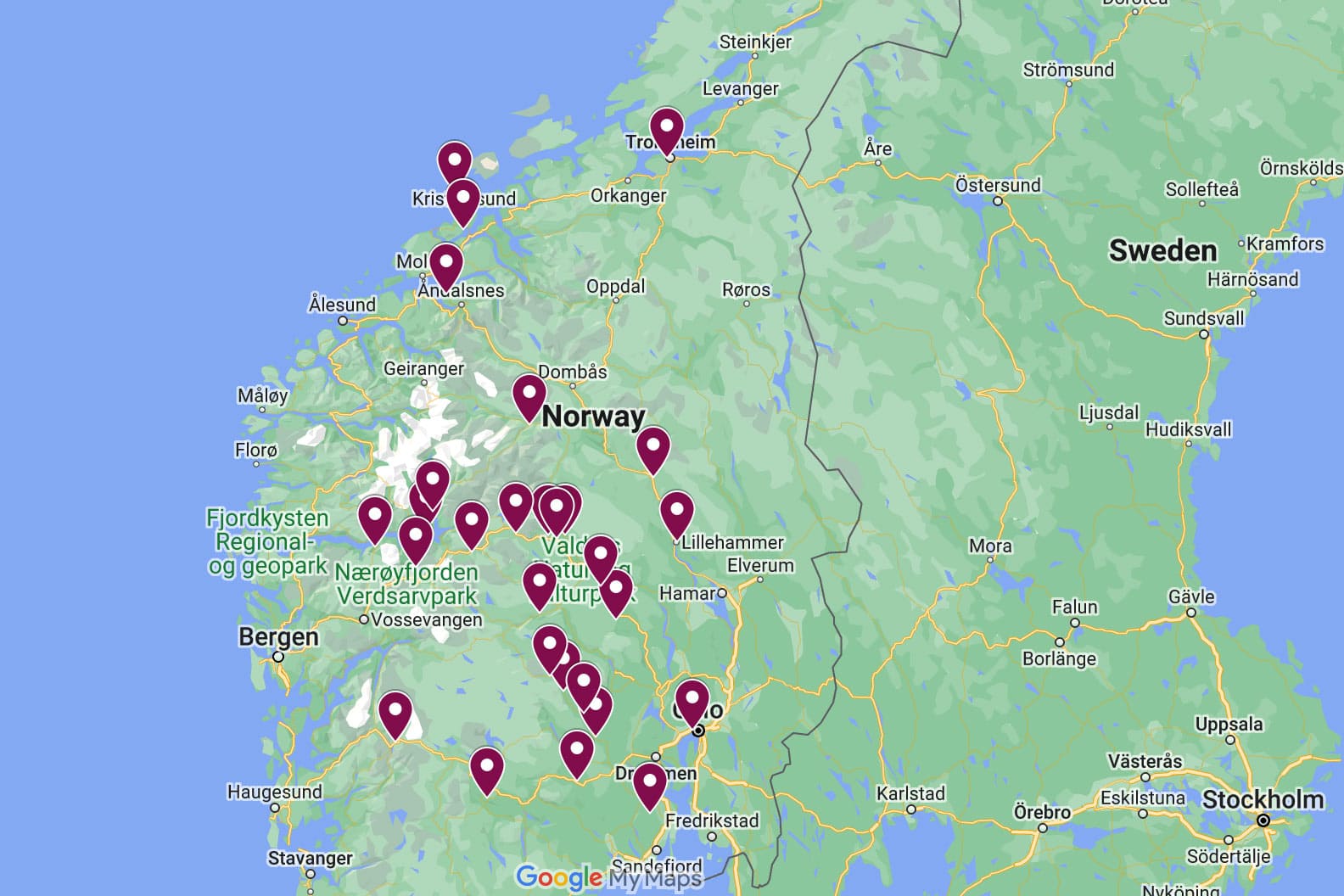
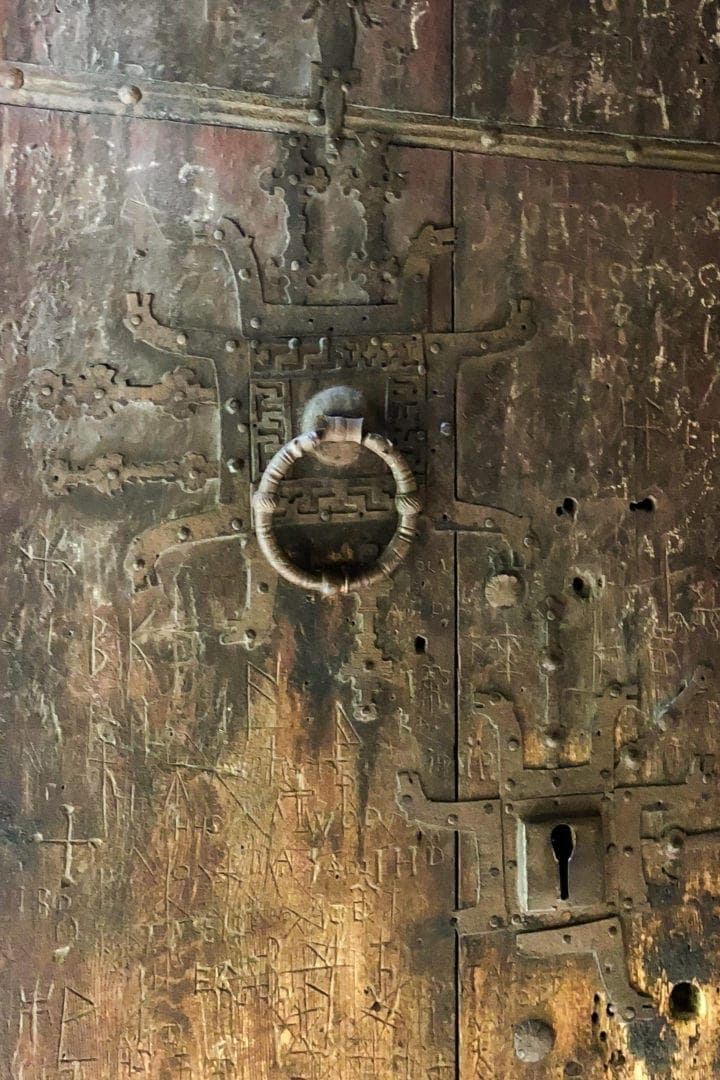
Our Choice of the Best Stave Churches in Norway
Røldal Stave Church
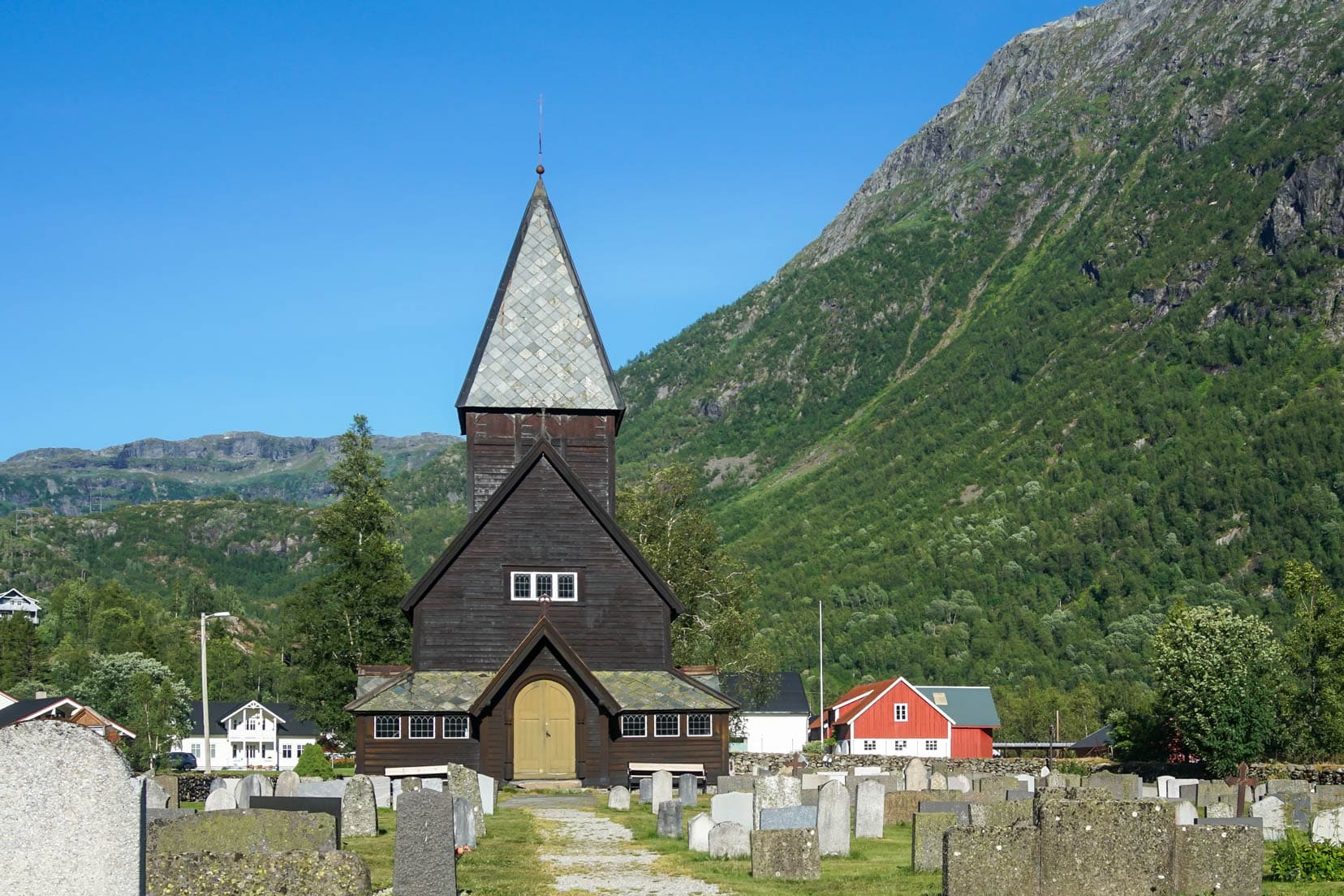
Quick Facts:
- Year of Construction: 1250
- Location: Odda municipality of Hordaland county, Norway, within the village of Røldal
Our Experience:
This was the smallest and the least grandiose of the stave churches we visited. It didn’t have any elaborate wooden carvings, such as the dragon heads or snakes seen on other stave churches.
This could have been because the church was in a poor economic area or the renovations failed to preserve some of the original building’s external features. The restoration work is professional, maybe too good, as we thought it had lost some authenticity.
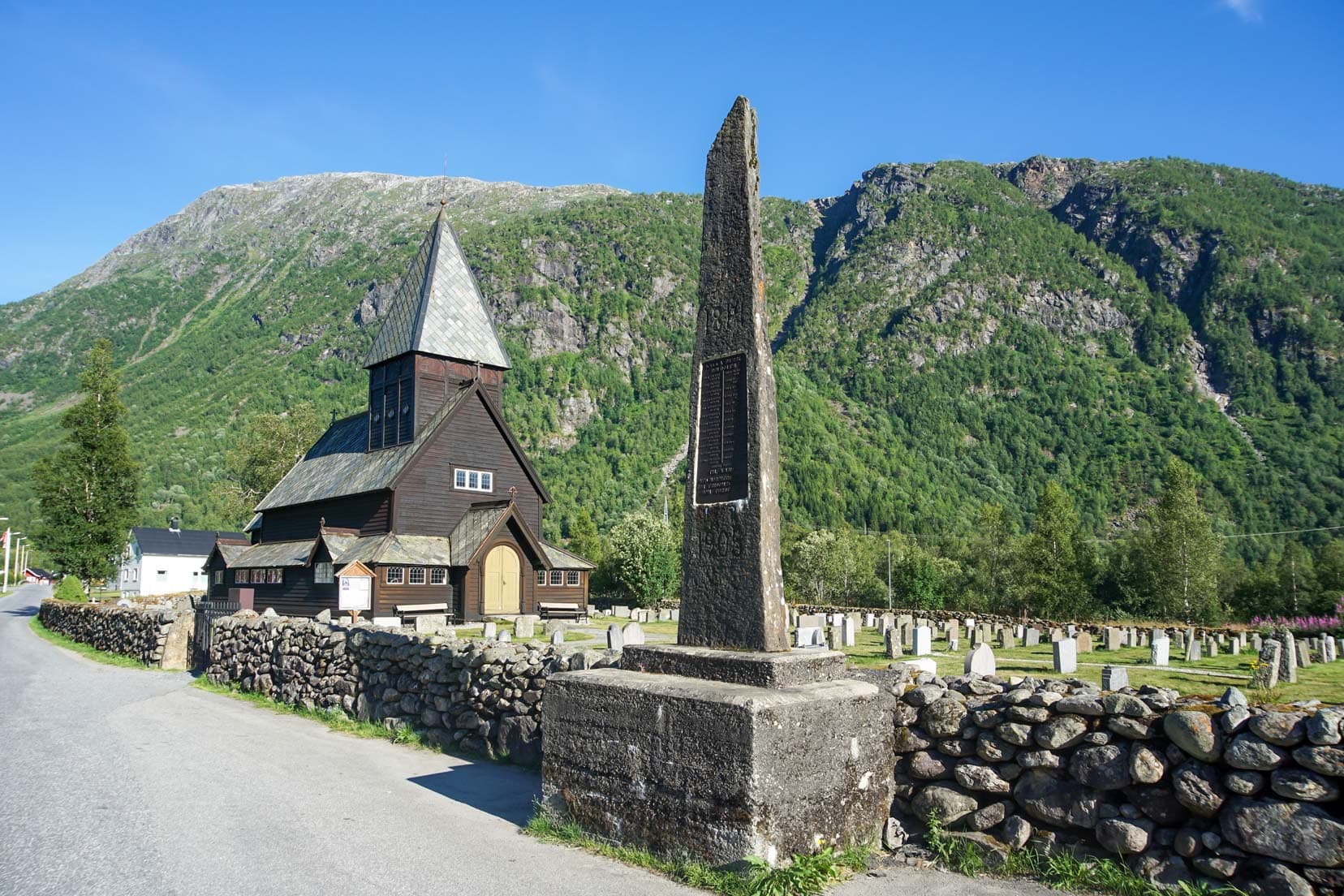
Historical Insight:
This church was an important pilgrimage site in Norway up until 1835. A crucifix inside the church, dating back to the 13th century, was said to ‘sweat’ each year on the 6th of July. This sweat held healing powers.
It underwent significant renovations in the early 20th century but retains its original charm and function as the parish church.
We visited outside of opening times, but the interior is apparently beautifully decorated.

Visitor Information:
- Opening Times: 10 am to 4 pm, May through September, on certain days. Contact Bergen Tourist Information; details are below.
- Cost: Nok 80 per adult.
- Parking: Free parking is available near the church grounds.
- Guided Tours: Available upon request. Contact via email: [email protected] or call +47 97672091.
- Planning Your Visit: For more details, contact Tourist Information in Bergen at [email protected] or (+47) 55 55 20 00.
Travel Tip: Combine your visit with our recommended Stavanger to Bergen 2-week itinerary.
While in the area, do you fancy a beautiful, kid-friendly, easy-rated 4km hike? The Bondhusvatnet hike, in Folgefonna National Park, is fantastic and only a one-hour drive away.

Borgund Stave Church and Bell Tower
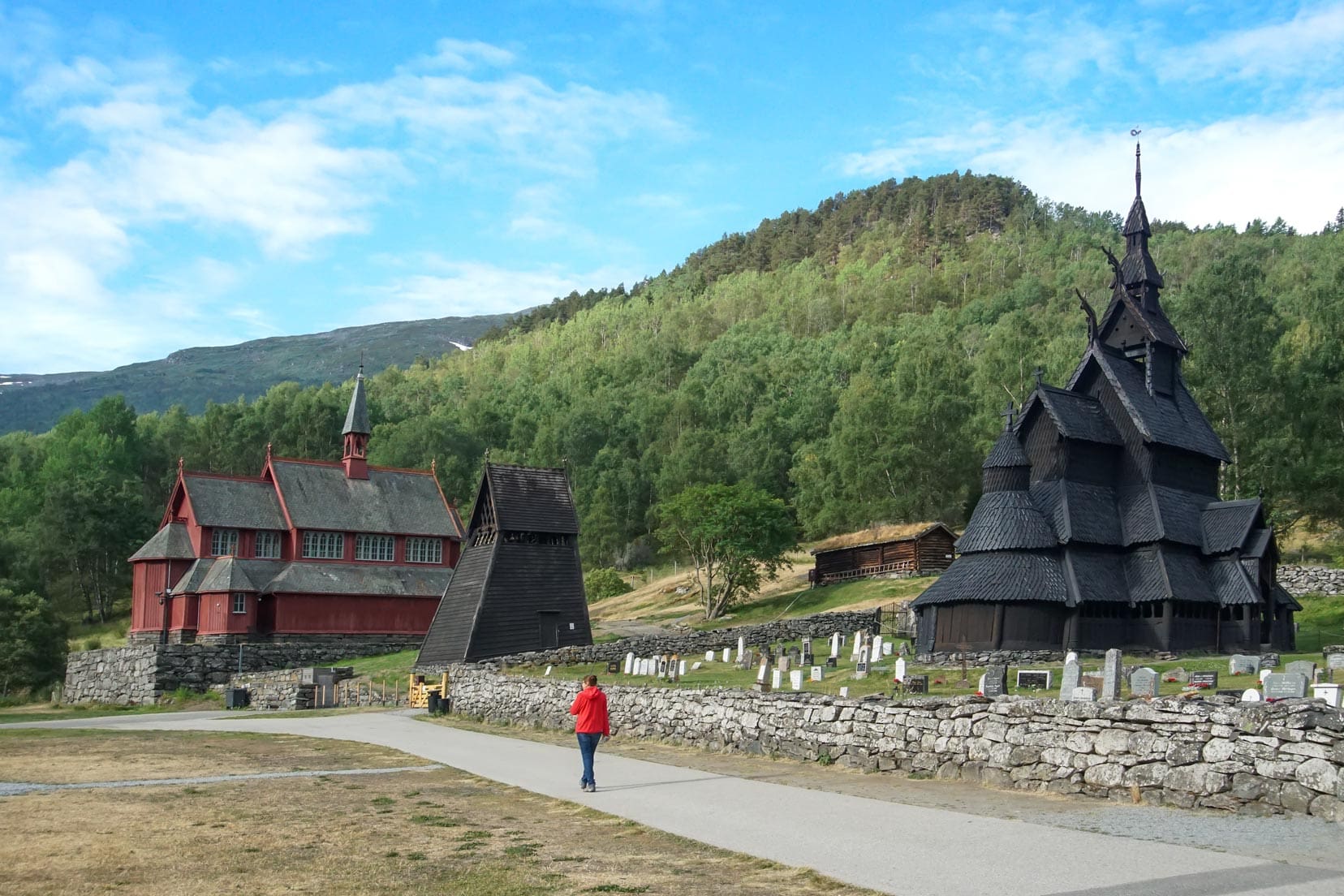
Quick Facts:
- Year of Construction: Around 1180
- Location: Lærdal municipality in Sogn og Fjordane county, Norway, within the township of Borgund
Borgund Stave Church is one of the best-preserved examples of its kind in Norway, often serving as a template for renovating other stave churches.
It features intricately carved portals, dragon’s head carvings on the rooftops, and scale-like wooden shingles on the roof. The church’s interior boasts a variety of designs and patterns on its wooden walls, which add to its historic charm.
Adjacent to Borgund Stave Church is Norway’s only free-standing stave bell tower, believed to have been built in the 13th century.
In 1868, one of its large bells was transferred to the newer Borgund Church.
The stave church was the county parish until 1854. In 1877, the National Trust of Norway acquired it to prevent its demolition, and it later became a museum.
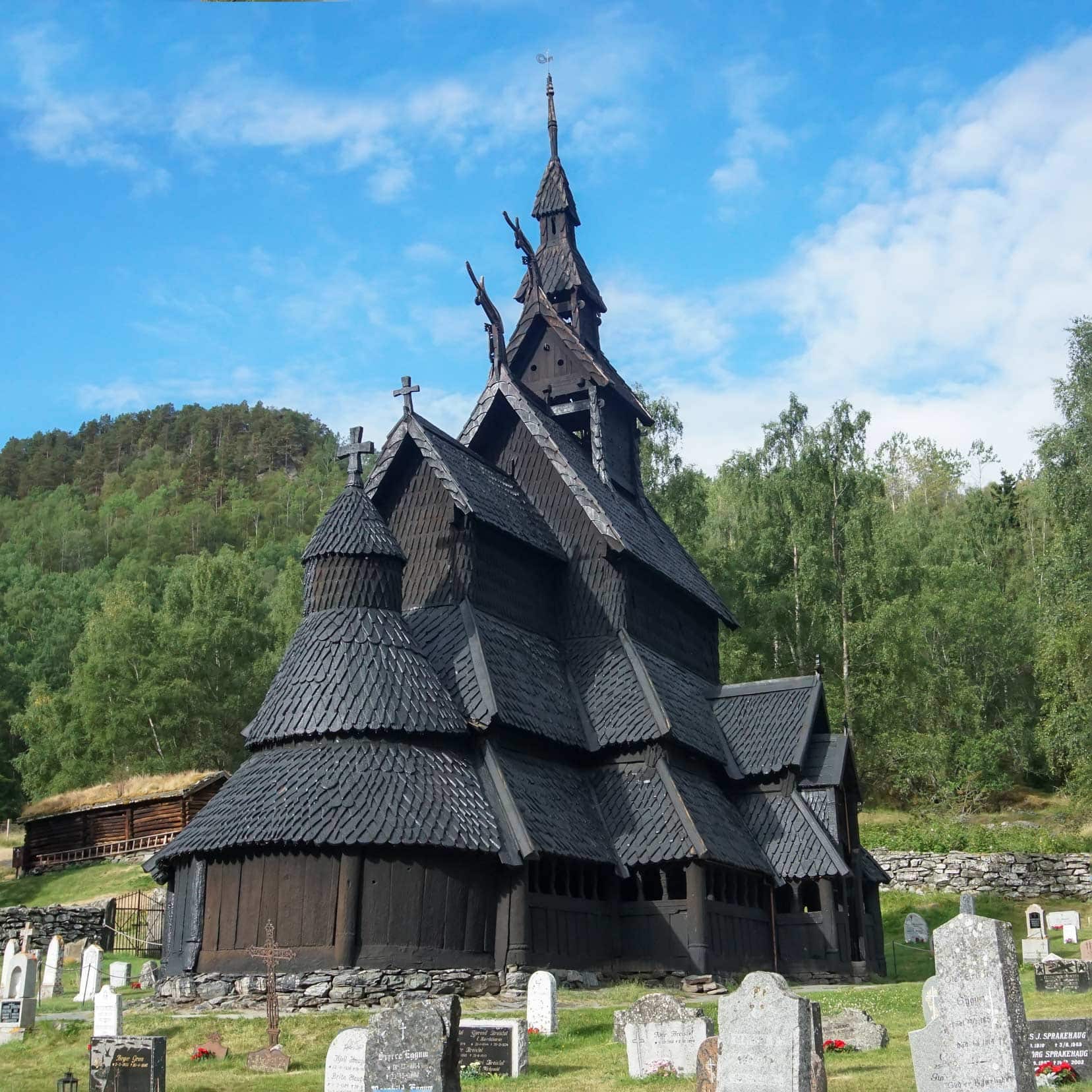
Our Experience:
Exploring Borgund was a highlight of our travels. Dragon head sculptures adorn each of the rooftops. You can’t help but be impressed.
We paid the entry fee to experience the inner part of Borgund Stave Church. Look for the beautiful doorway inscriptions.
It’s dark inside but not so dark that you can’t see some painted scenes, motifs and inscriptions. The very pleasant smell of pine tar pervades the atmosphere. You really do feel like you’re transported back in time.
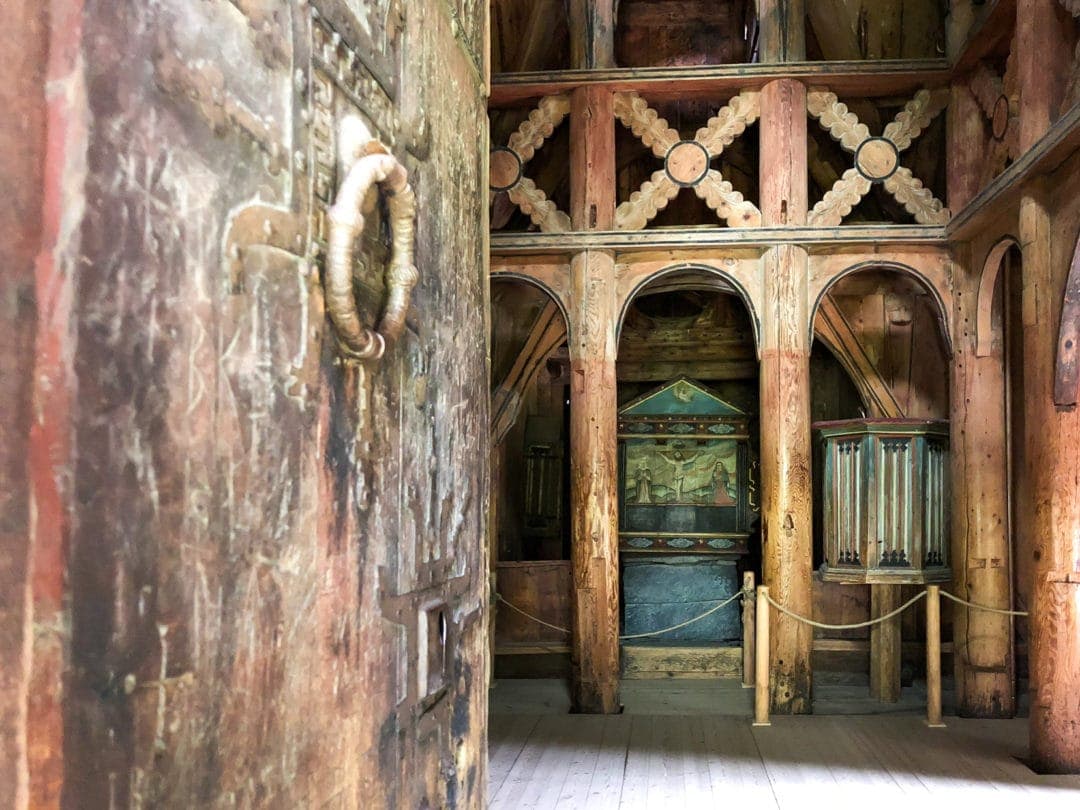
Within a couple of hundred metres is the Borgund Museum. The entry fee to the stave church also includes entry into the Borgund museum. There are helpful displays and information boards that help fill the knowledge gaps.
While you’re at Borgund Stave Church, take a walk on the famous, historic Kings Road.
Access is easy and quick: Follow a path behind the church to see this hand-built paved route completed in 1793. You can read more in our best hikes in Norway article.
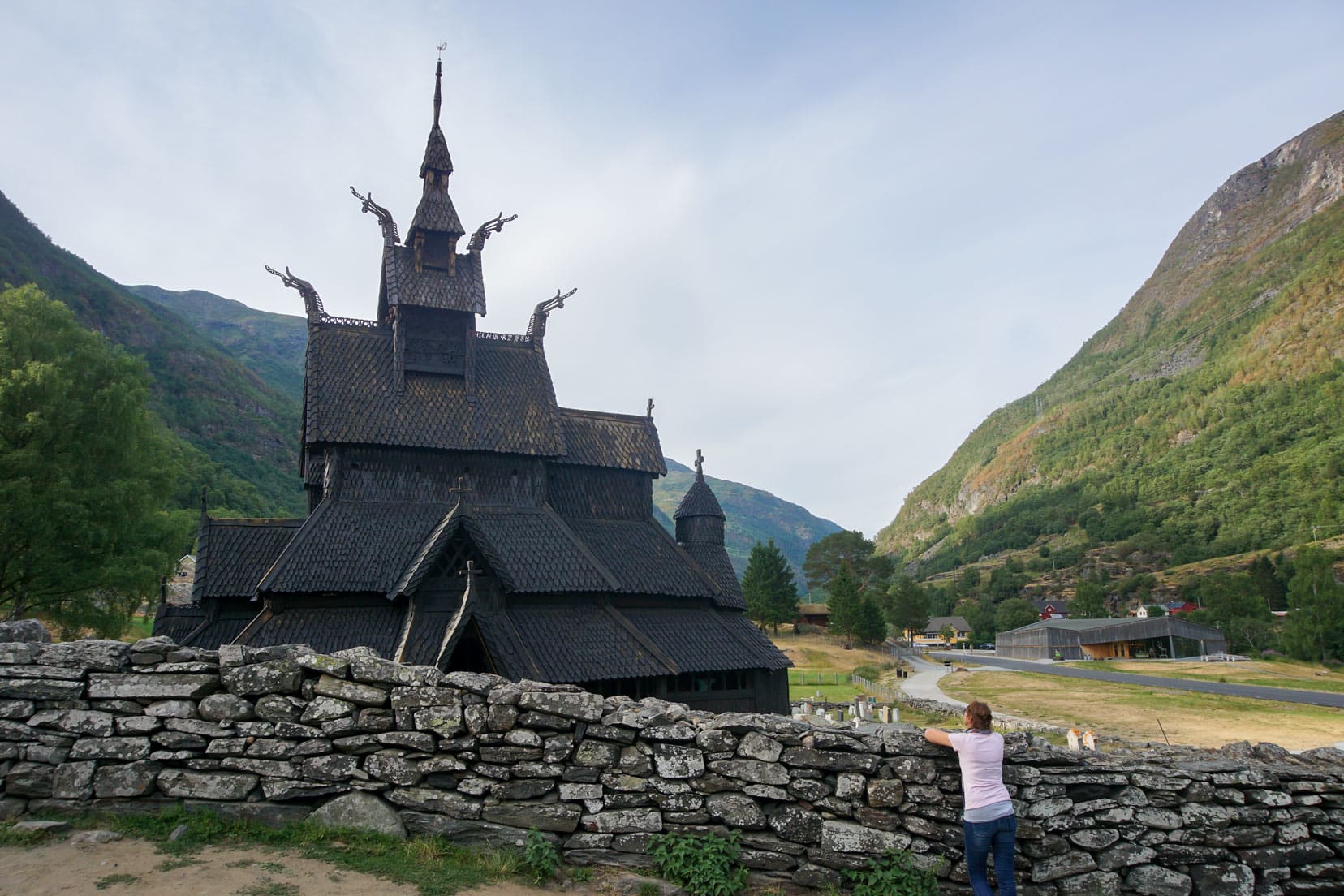
Borgund Stave Church Information:
- Opening times: Mid-April to Mid-October, daily from 09:30 am – 5:00 pm.
- Cost: Adult: Nok 130, Children: Nok 90 (The entrance fee includes access to the Borgund Stavkyrkje visitor centre, about 200m from the church).
- Contact: [email protected] (ph. 45738972) or contact Tourist Information in Bergen, Tel.: (+47) 55 55 20 00, E-mail: [email protected]

Hopperstad Stave Church
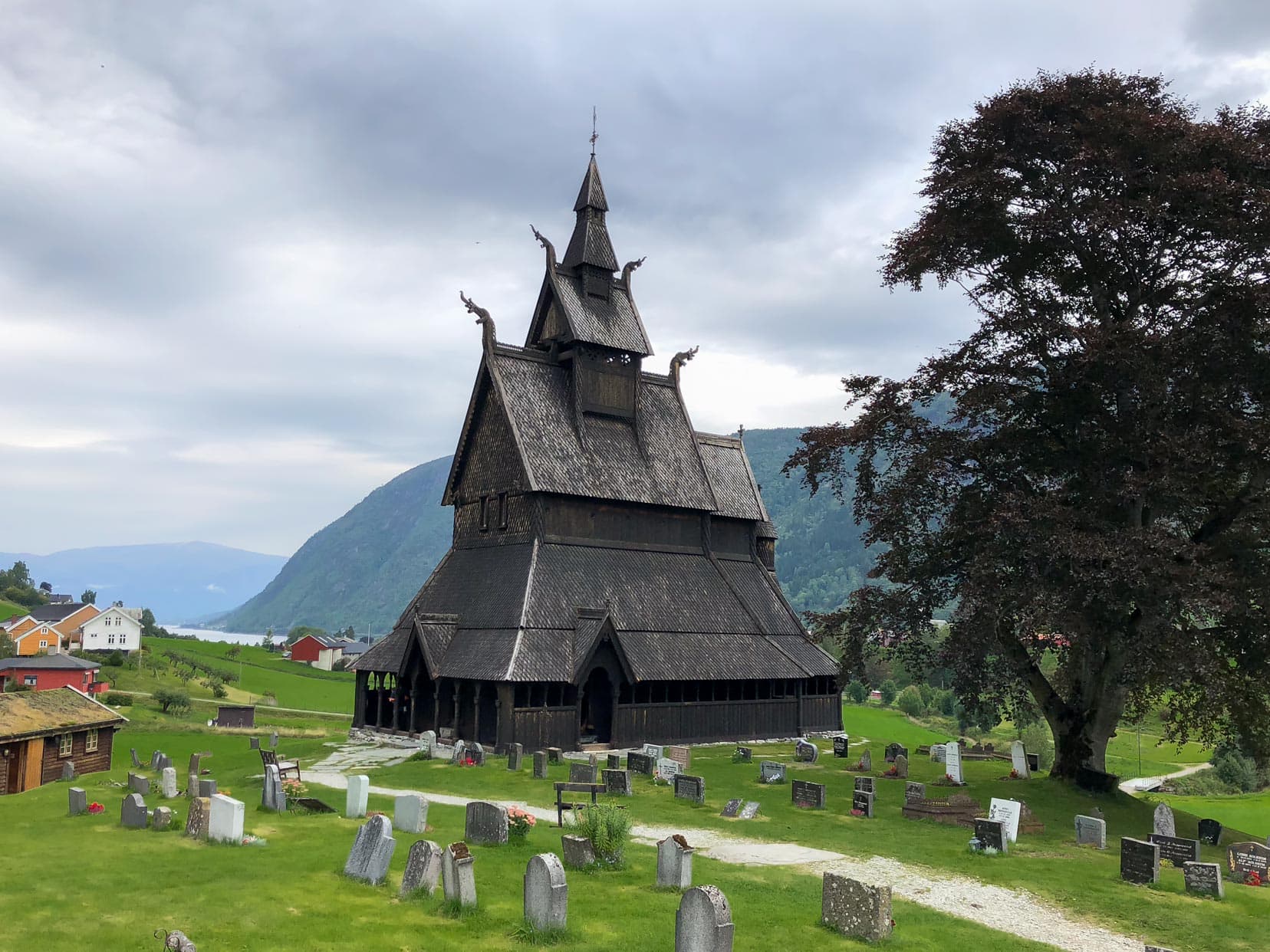
Quick Facts:
- Year of Construction: 1130
- Location: Vik Municipality of Vestland County in the village of Vikøyri
This triple-nave stave church stands majestically just outside the village of Vikøyri, offering sweeping views over Vikøyri and the Sognefjord. Its exterior is notable for the dragon head carvings that adorn the roofline.
Another beautiful example of Norse architectural prowess.
The church’s interior is an architectural marvel. It resembles the inverted hull of a Viking ship with exposed wooden ribs. The walls are intricately decorated with runic inscriptions and ancient symbols.
Historically, the church served not only as a place of worship but also as a community gathering spot. The dead were often buried beneath its floors, but that practice ceased in the early 19th century due to the odours.
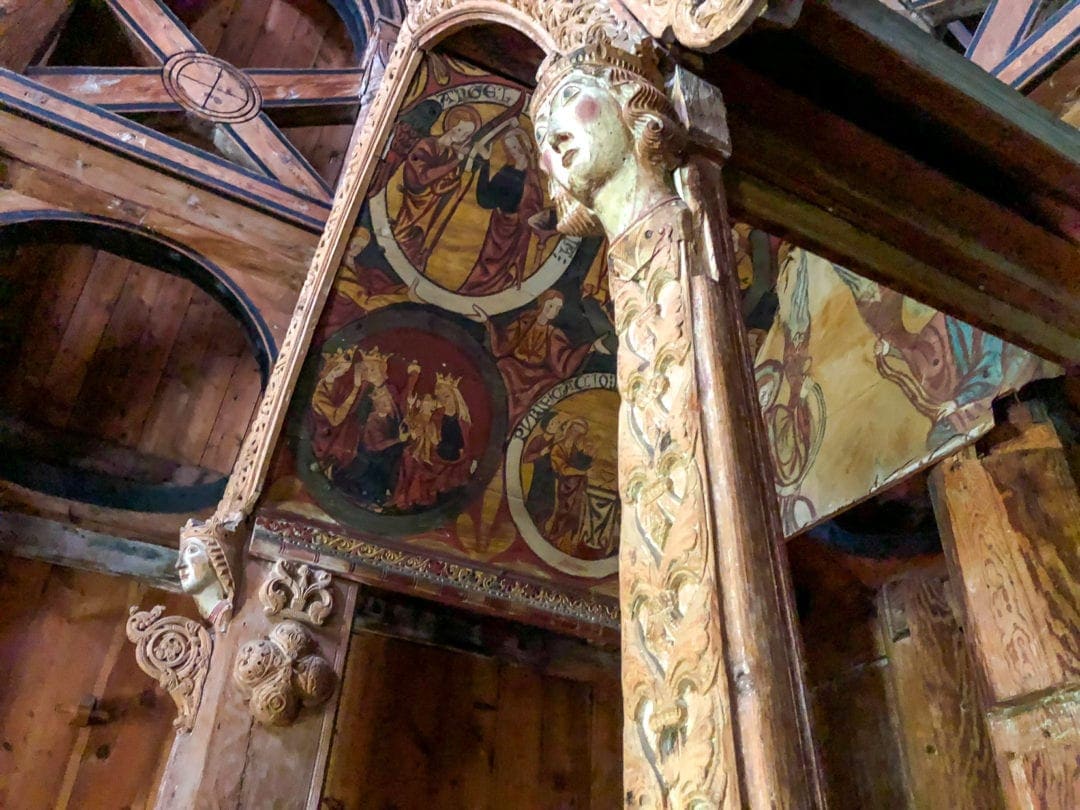
Our Experience:
The first thing you notice when visiting Hopperstad is its dramatic setting. The stave church overlooks a fjord which completes the scene for this masterpiece.
The intricate craftsmanship of the church, particularly the interior, mimics the hull design of a Viking ship. The inscriptions and faded motifs have retained their clarity, so you can make out the different designs and colours.
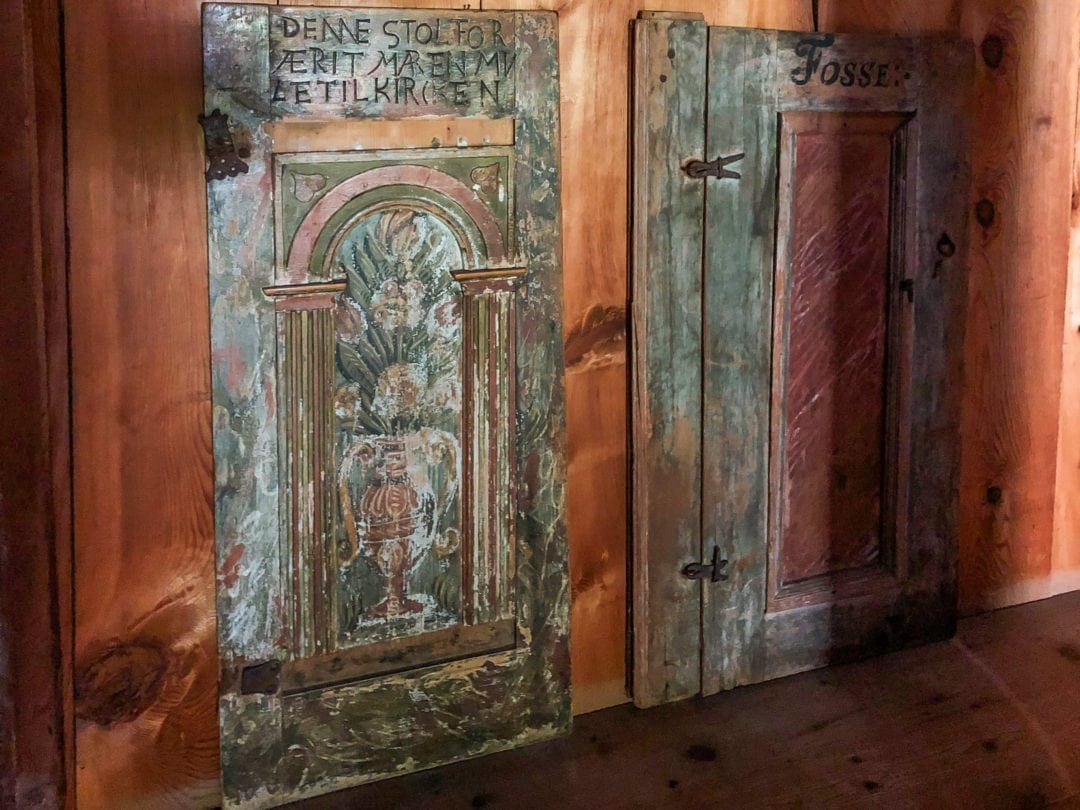
Hopperstad Stave Church Information:
Opening Times: Mid-May to mid-September, daily from 10:00 am to 5:00 pm.
Cost: Adults: Nok 110, Children: Nok 80.
Contact Information: Phone: +47 40155971 Email: [email protected] For more details, email the ‘Visit Sognefjord’ Tourist Information Centre at [email protected]
Parking: Available adjacent to the church.
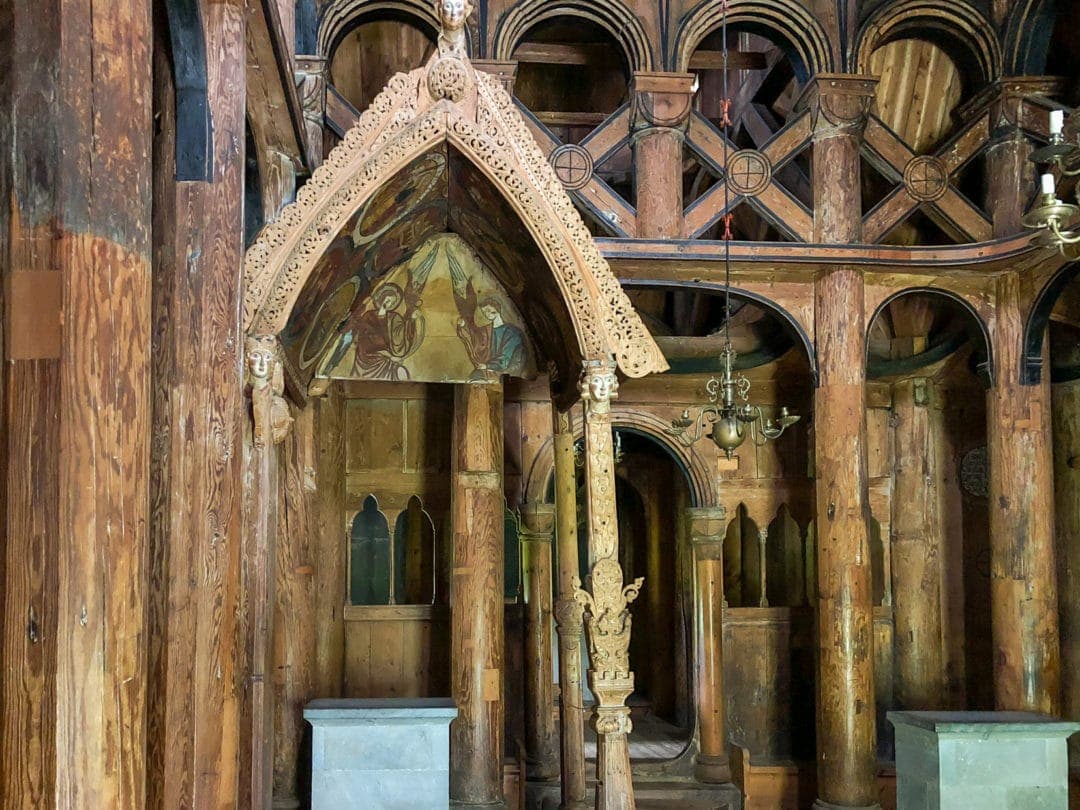
Heddal Stave Church

Quick Facts:
- Year of Construction: 1200
- Location: Notodden Municipality within Telemark County in the village of Heddal
This majestic mid-13th-century stave church, noted as the largest in Norway, boasts three turrets and over 50 roof surfaces. It continues to serve as the main parish church for Heddal, illustrating its enduring importance in the local community.
The church’s intricate interior features designs that reflect myths such as those of Sigurd the Dragon Slayer, with wall paintings and a 17th-century altar.
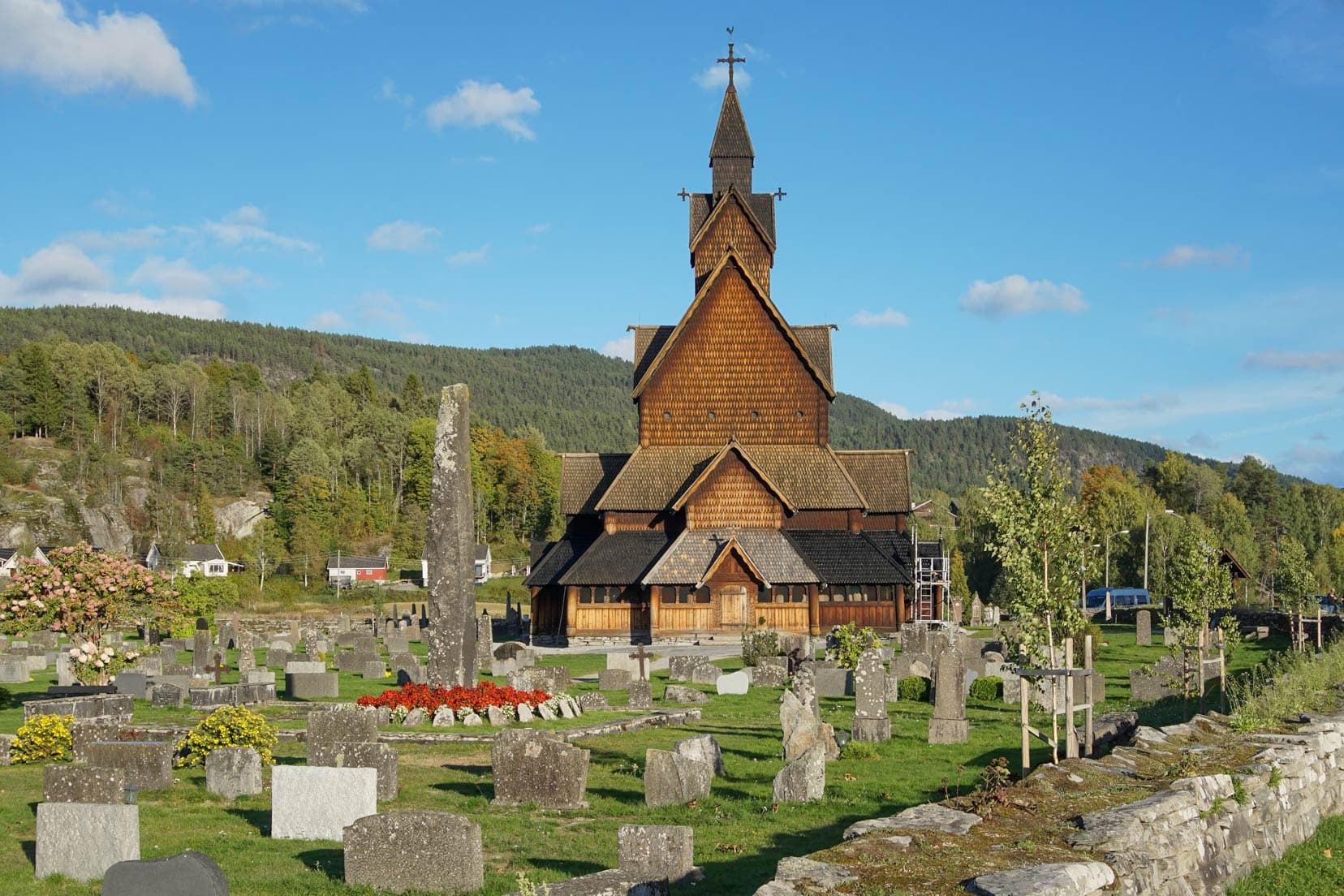
Each of the church’s four doorways, heavily carved and oriented toward the cardinal directions (N,S,E and W), were designed to ward off evil spirits. Men, women, clergy and processions used their own doorways in an effort to ward off evil spirits.
Our Experience:
We only got to explore the exterior Heddal Stave Church as we arrived after the opening time. But all was not lost as we were able to talk to a guy who was carrying out maintenance on the church.
His job was to mix up the pine tar and apply it to the pine timber of the church.
He gave us a detailed run-down of the ingredients used in the tar, which copied that of the original ‘recipe’. It was interesting with information that we hadn’t found anywhere else on our stave church visits.

Heddal Stave Church Information:
Opening Times: Mid-May to Mid-September, daily from 10:00 am to 4:00 pm. The church may be closed on weekends for church services.
Cost: Adults: Nok 100
Contact Information:
- Håvard Russnes (Churchwarden): Tel. 915 67 600, Email: [email protected]
- Karen Voldsund (Tourist Officer) Tel. 922 04 435, Email: [email protected]
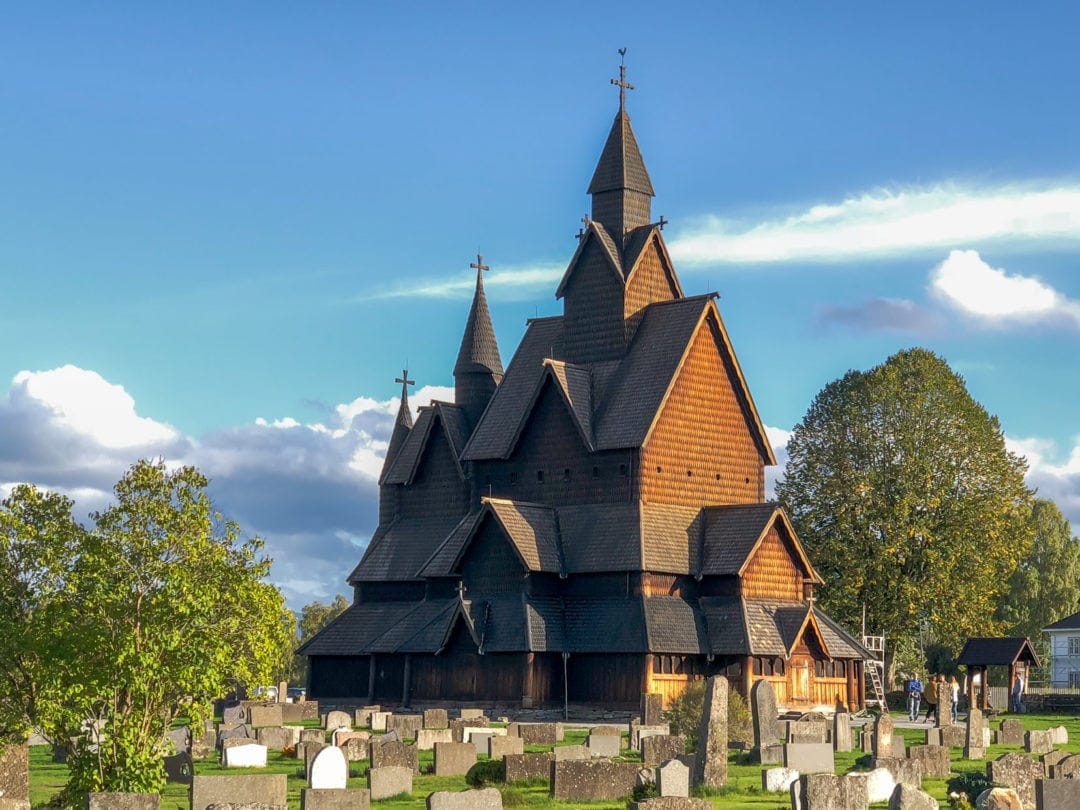
Gol Stave Church
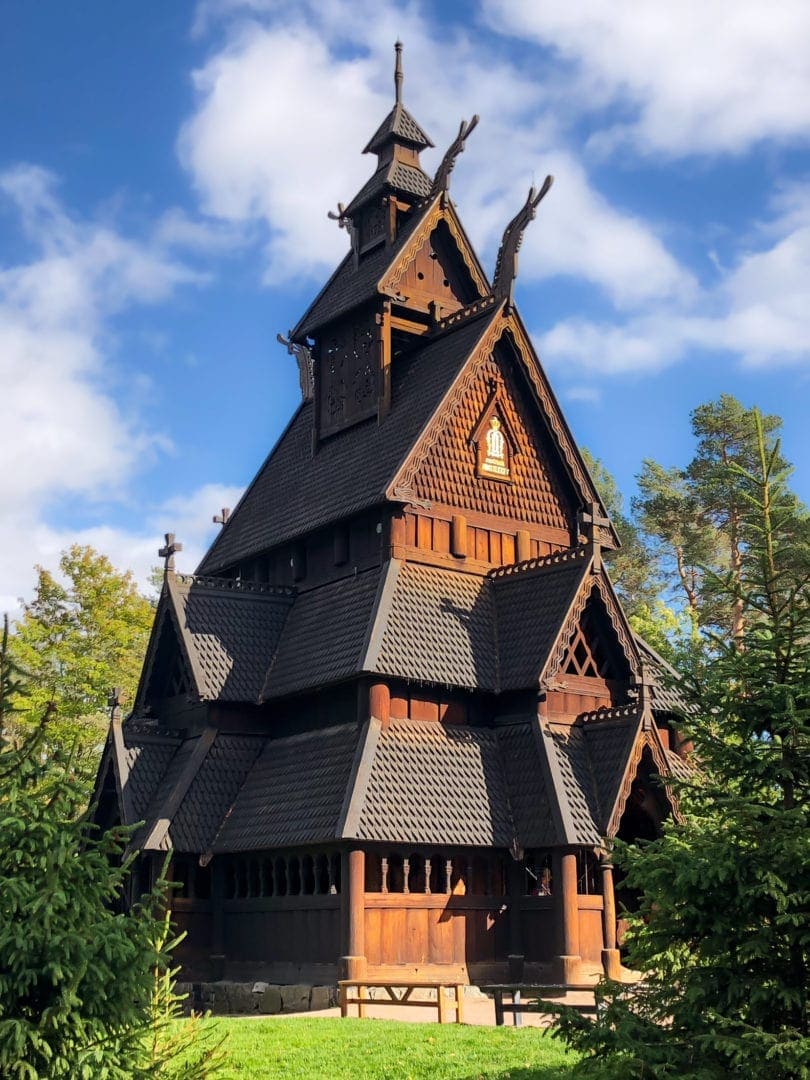
Quick Facts:
- Year of Construction: Approx. 1200
- Location: Norwegian Museum of Cultural History, Bygdøy, Oslo
Originally from Gol in Buskerud, this stave church was relocated to Oslo in 1885 to prevent demolition. It now stands as a testament to Norway’s rich ecclesiastical heritage at the Norwegian Museum of Cultural History.
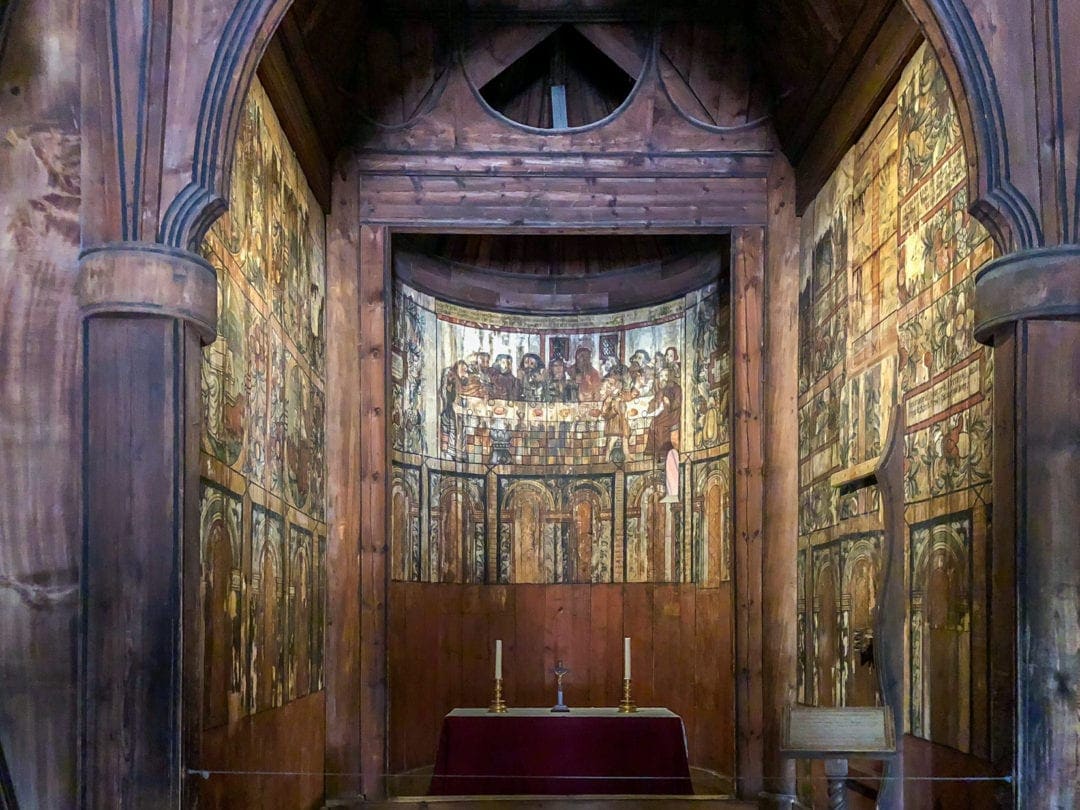
Our Experience:
The church’s placement on a hill within the museum grounds immediately captured our attention during our visit. We were fortunate to have Annie as our guide, whose attire in the traditional Norwegian ‘bunad’ added a vibrant cultural layer to our tour.
Annie did not charge a fee, making herself available at the Stave Church for questions. She wore the traditional bunad, a traditional folk costume worn by farmers, the colours and design reflecting the area of origin.
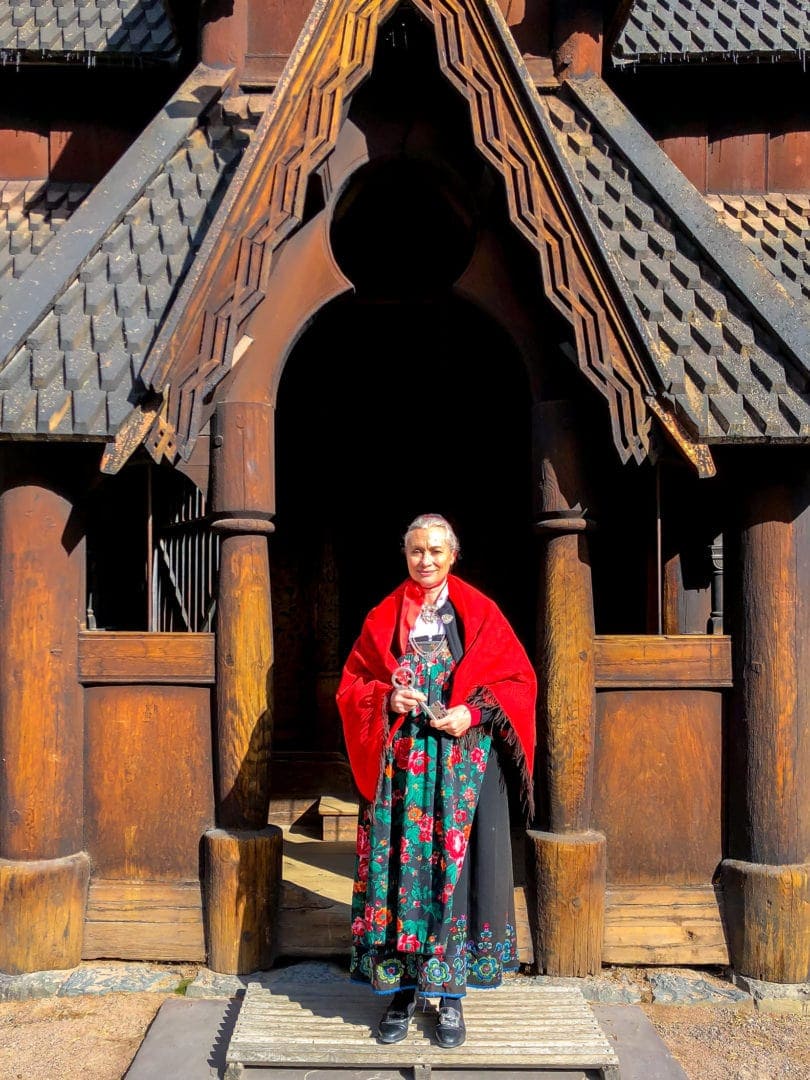
Annie shared not only the architectural details but also engaging stories of old Norse customs, such as why women stood on the north side of the church—supposedly to be taken first should demons enter, illustrating the intertwining of culture and superstition.
Her ability to share historical stories, especially about the runes that were only visible under torchlight, made the experience extra special as we would not have known and would have completely missed seeing them.
We learned about the church’s original community in Gol and the intricately painted interior scenes that depicted various aspects of rural Norwegian life centuries ago. This additional information made the visit that much more special.
So, if you do have the opportunity to join a guide on a tour then do so, it’s time well spent.
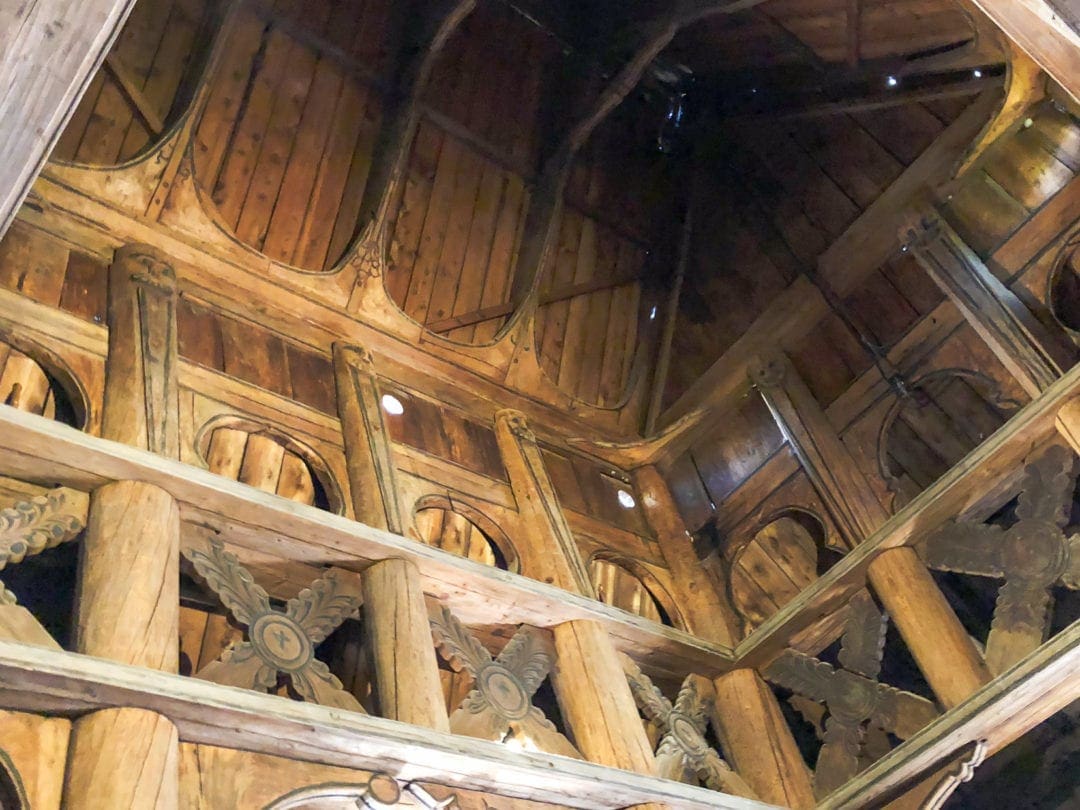
Gol Stave Church Information:
Opening Times: May to October: Daily from 10:00 am to 5:00 pm
Features: Free WiFi available throughout the museum grounds.
Contact:
- Norsk Folkemuseum: Tel. +47 22 12 37 00, Email: [email protected]
- Oslo Visitor Centre: Call centre +47 23 10 62 00, Mon – Fri 09:00 am to 04:00 pm, Email: [email protected]
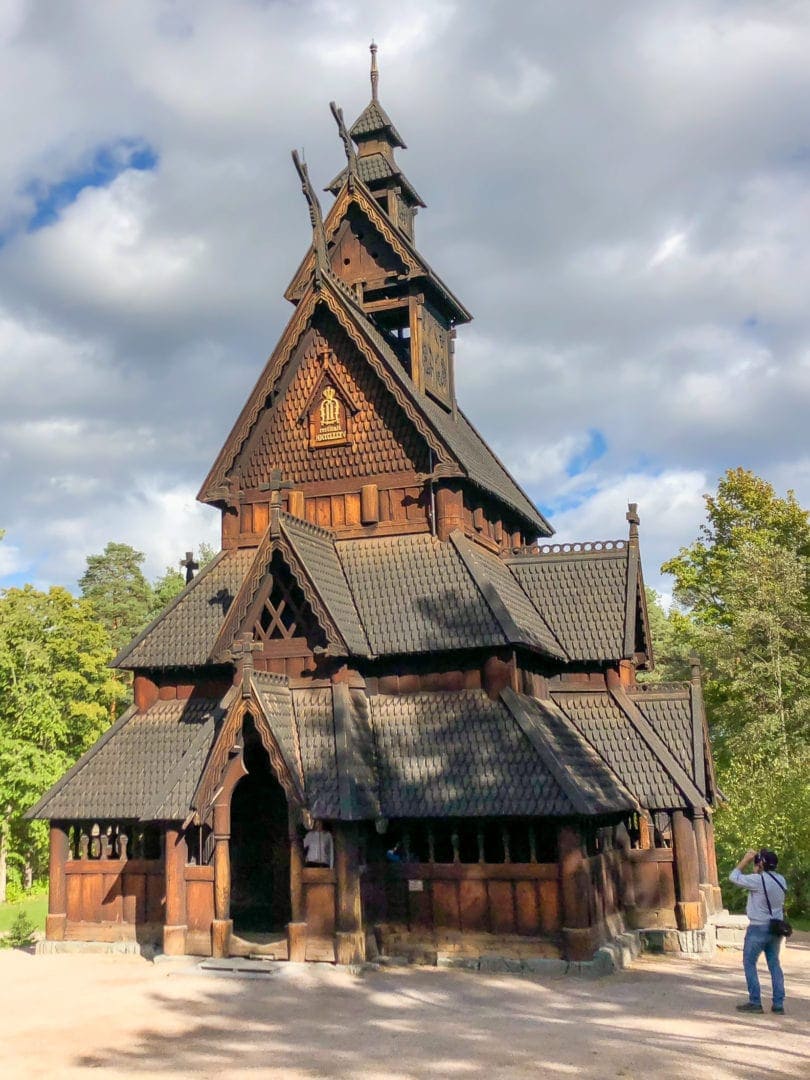
Interesting Facts About Norway’s Stave Churches
- Urnes Stave Church: Located in the municipality of Luster in Sogn og Fjordane county, this is the oldest stave church in Norway and is listed as a UNESCO World Heritage Site.
- Heddal Stave Church: In Eastern Norway, it is the largest remaining stave church, standing 26 meters high and measuring 20 meters long and 16 meters wide.
- Historical Abundance: Historical records suggest that during the 12th to 14th centuries, there were over 1,000 stave churches in Norway, typically one in each village.
- Runes and Carvings: Faint, nearly invisible runes can sometimes be seen on these churches’ stave walls and upright timbers.
- Heritage Listing: Only one of the twenty-eight Norwegian stave churches, Urnes Stave Church, is UNESCO heritage listed.
- International Replicas: Two recent international replicas of Norwegian stave churches include Heimaey Stave Church in Vestmannaeyjar, Iceland (built 2000), and Chapel in the Hills in South Dakota, USA (built 1969), which is a replica of Borgund Stave Church.
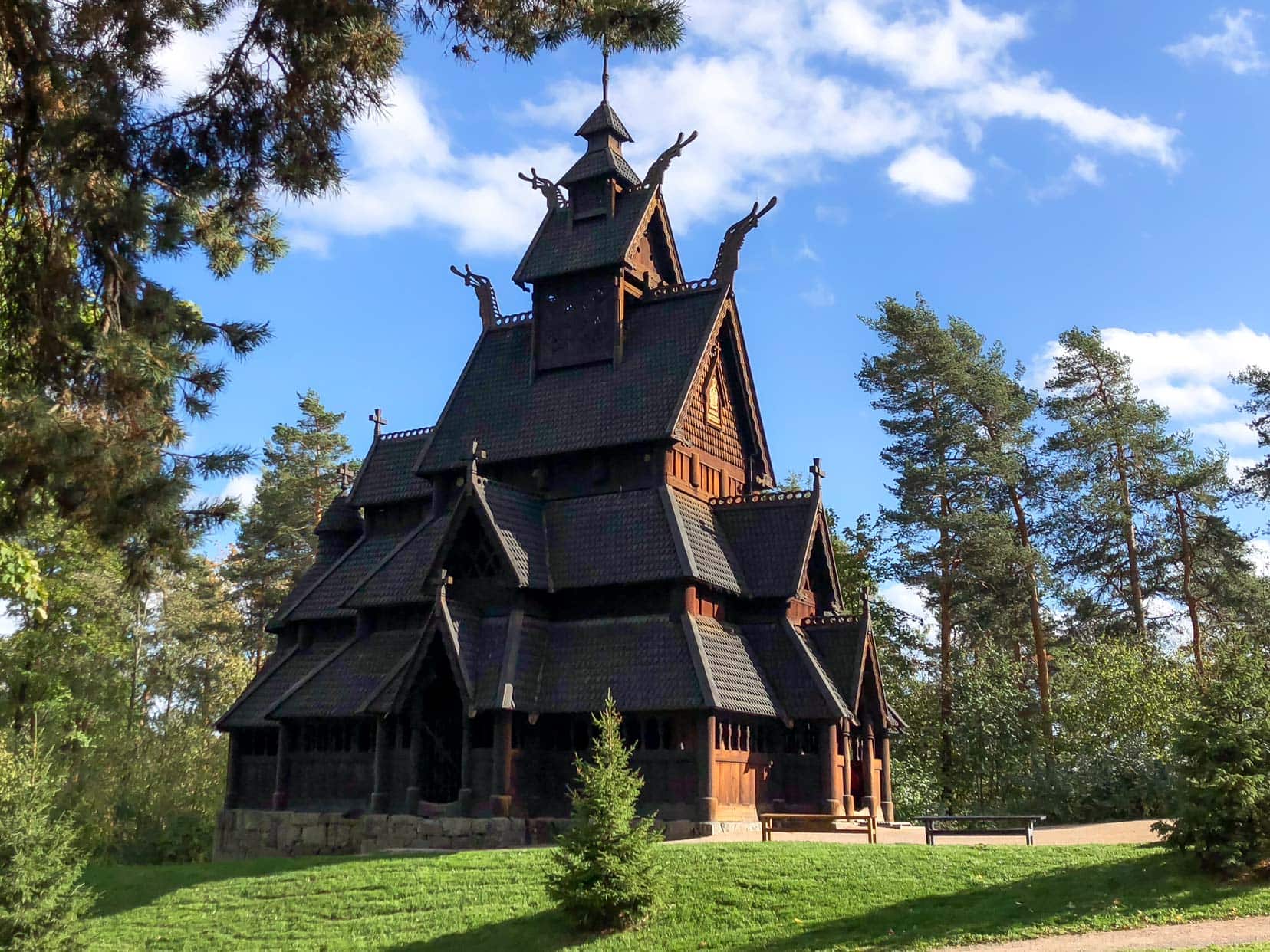
Cultural Significance of Stave Churches in Norwegian Heritage
Stave churches, predominantly constructed during the Middle Ages between the 12th and 14th centuries, were built primarily for the Roman Catholic Church, the predominant religion in Norway before the Reformation. It is believed there were more than 1000 standing in Norway.
In 1537, the Reformation swept Norway, ousting Catholicism for Lutheranism. This shift not only altered religious practices, but the churches underwent major changes as many stave churches were built during the catholic age.
Many surviving stave churches met their demise due to the Church Act of 1851. This legislation mandated that the size of a church must accommodate a third of the parish’s population, leading to the demolition of many smaller stave churches that couldn’t meet these requirements.
Today, just 28 beautiful stave churches remain in Norway. They have endured the changes and upheavals and continue to fascinate visitors with their wonderful examples of medieval Norwegian craftsmanship.
In more recent times, since 1992, twenty-two stave churches have unnecessarily found their demise at the hands of arsonists.
Between 2001 and 2015, the Norwegian Directorate for Cultural Heritage implemented The Stave Church Preservation Programme to restore and preserve Norway’s architectural treasures.
Throughout the programme, expert craftsmen meticulously assessed and restored the stave churches, prioritizing using original construction methods and techniques to maintain historical authenticity.
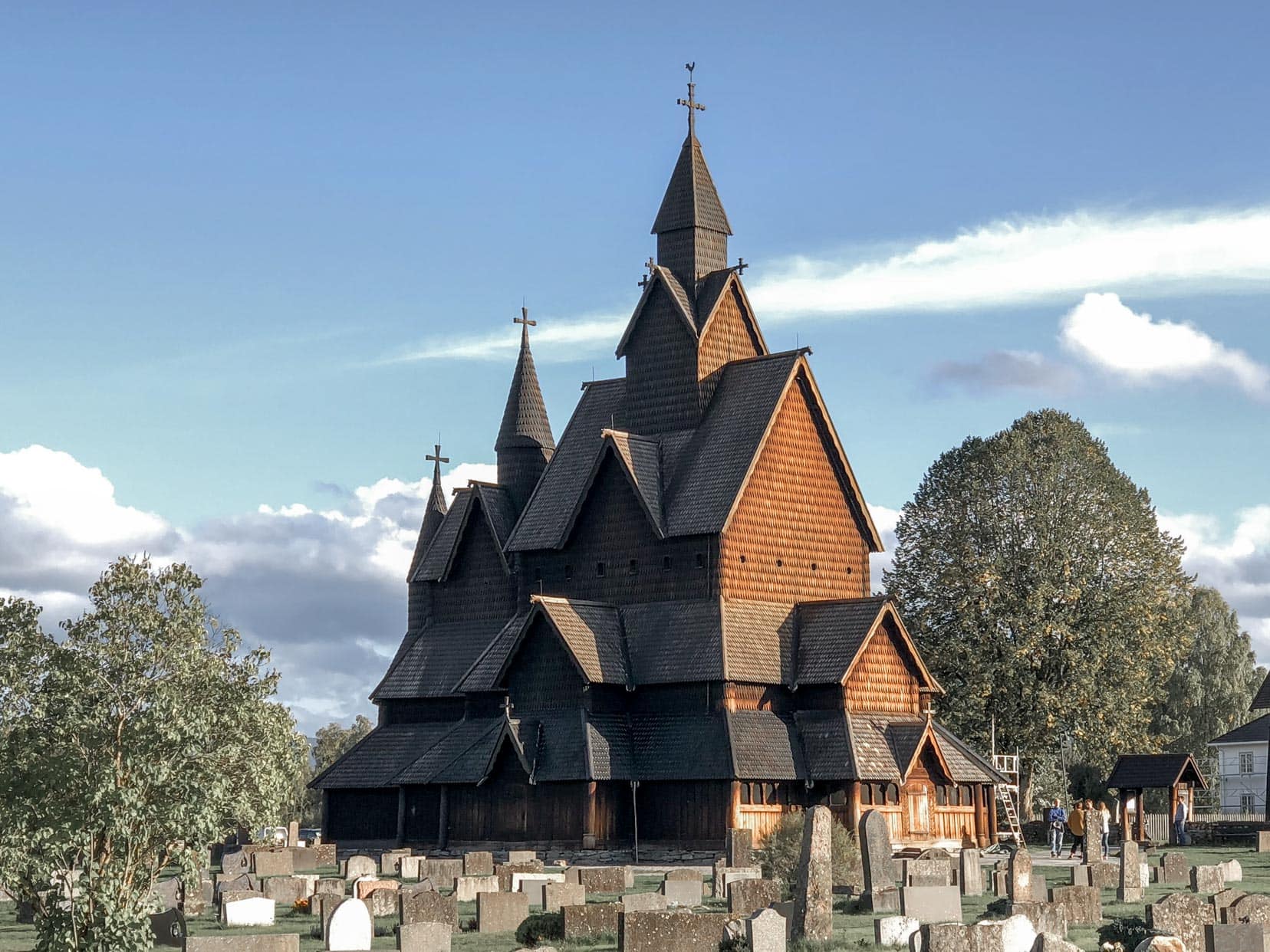
A Closer Look at the Architectural Beauty of Stave Churches
Let’s explore what makes the architecture of Norway’s stave churches so special.
The Architectural Elegance of Norway’s Stave Churches
Before diving deeper, it’s essential to understand the term “stave” as it relates to these historic structures.
The architecture of Norway’s stave churches varies, yet they all share a unique construction element—major uprights or ‘staves’ are integral to their design.
Insight into Stave Church Architecture
At the core of each stave church, corner-post staves form a robust framework that supports the walls, constructed from horizontal planks.
These ‘stave walls’ feature curved parts made from the natural arches formed by tree trunks and their roots.
A visit to Borgund Stave Church offers a closer look at these architectural marvels firsthand.
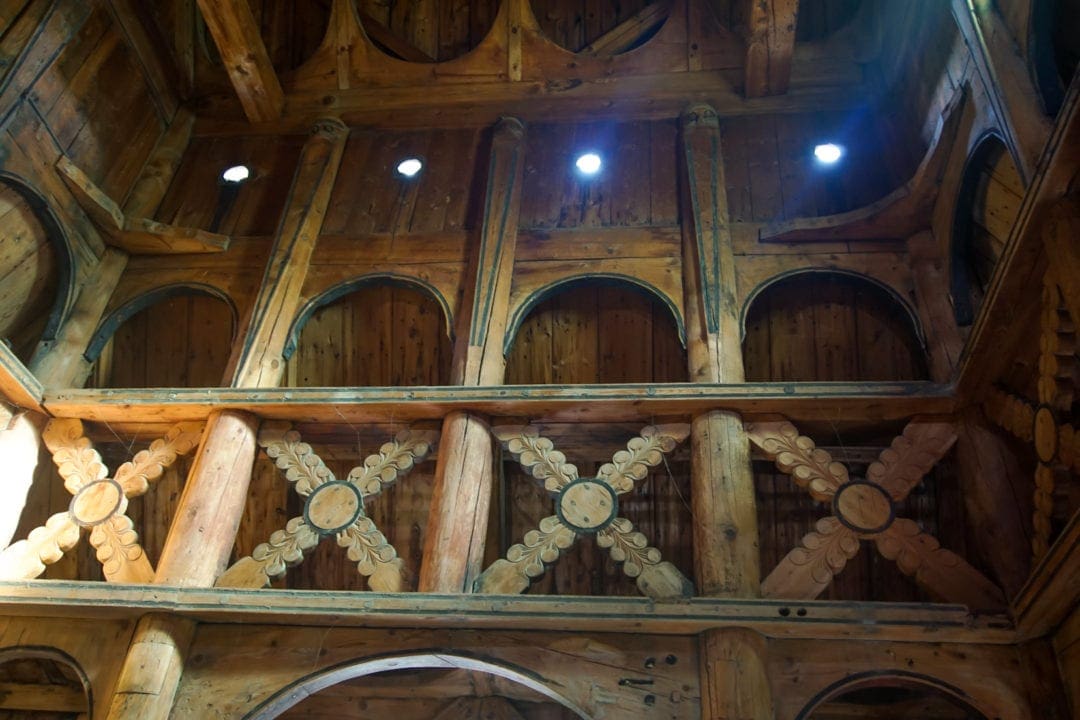
Building Techniques and Timber Preservation
Norwegian stave churches were traditionally crafted from old-growth pine, positioned vertically to allow the sap to rise and coat the timber, enhancing its durability and rot-resistance.
This method was crucial in the early days when many stave churches had foundations directly in the soil.
Innovations in construction introduced stone sills or foundations beneath the staves, significantly extending the lifespan of these structures by protecting the base from moisture.
Given the similarity between the interiors of a longship and a roof structure, many believe that the skilled craftsmanship evident in stave churches was influenced by techniques used in Viking ship construction.
The Role of Tar in Preservation
An essential aspect of maintaining a stave church is the application of pine tar. This process involves heating the timber in a kiln to extract tar, which is applied to the church’s exterior.
This protects the wood and gives it a distinctive, pleasant aroma.
During a conversation with a painter at Heddal Stave Church, we learned that reapplying tar is a meticulous process that can take several months, adhering as closely as possible to traditional methods.
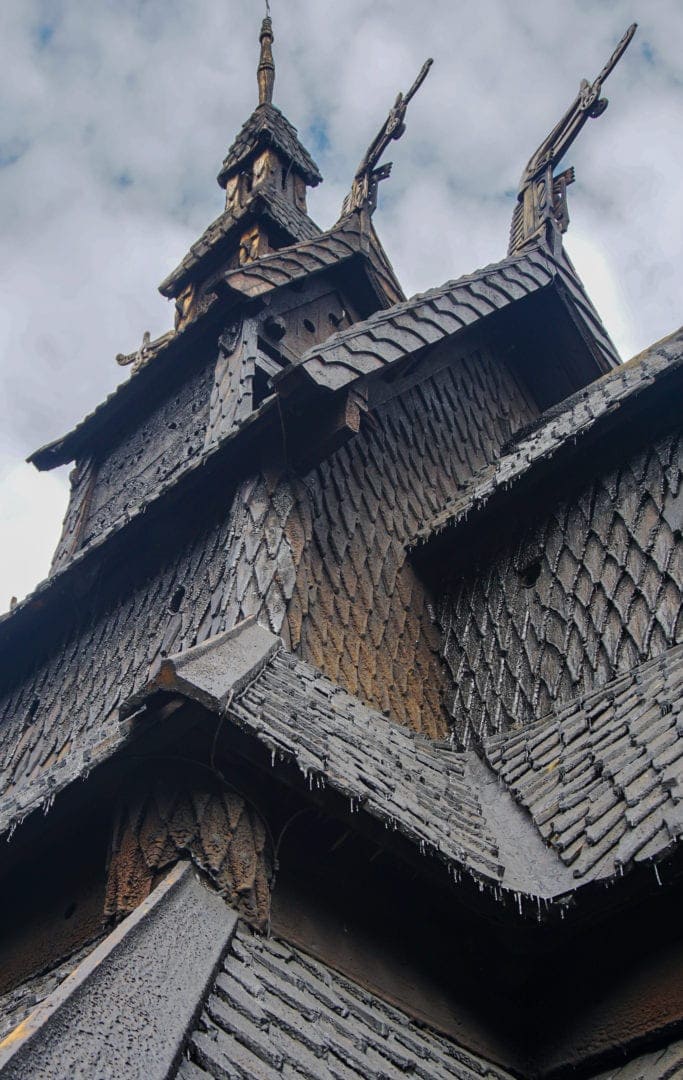
Frequently Asked Questions
What is the most famous stave church?
Borgund stave church is the most famous of the Norway churches. Because it is the best preserved, it is used as a template for renovation of other stave churches.
What is the oldest stave church in Norway?
Urnes stave church is the oldest church in Norway and is located at Sognefjord, on the west coast. Urnes stave church is UNESCO heritage listed.
How many stave churches are left in Norway?
There are 28 remaining stave churches in Norway. It is thought there were once more than 1000 stave churches in the country.
What is the 800 year-old stave church in Norway?
Borgund stave church, built around 1180 A.D. is now a little over 800 years old. A stave church is also called a black church due to the dark colouration of the pine wood caused by the pine tar used to coat the timber.
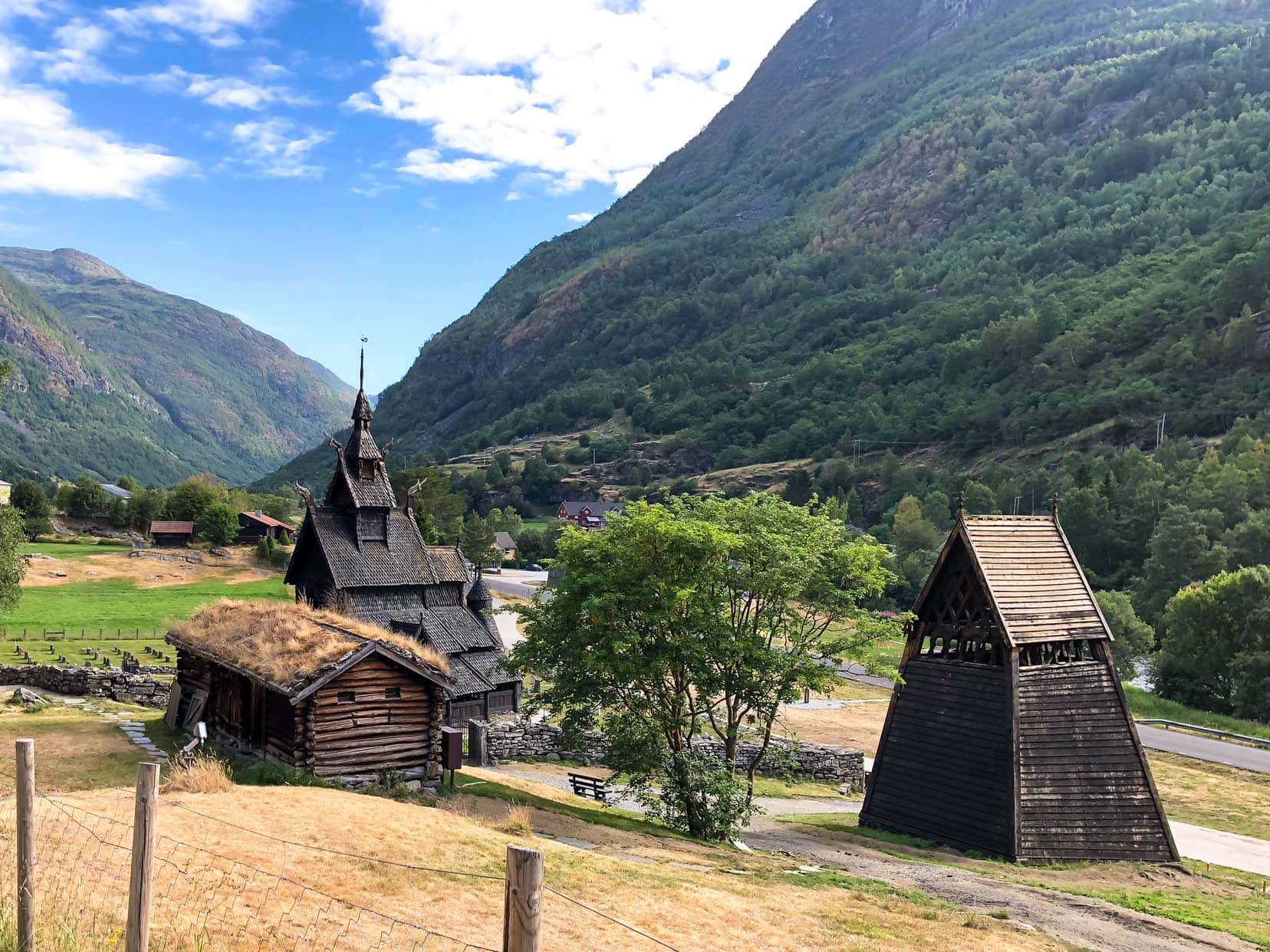
Best Stave Churches … That’s a Wrap
Exploring the stave churches of Norway offers a unique opportunity to immerse yourself in the country’s deep historical roots and cultural heritage.
Each church tells a story of medieval life, craftsmanship, and spirituality that continues to enchant.
Whether you’re a history enthusiast, an architecture buff, or simply one who enjoys a journey through Norway’s past, stave churches stand as symbols of a bygone era that should be treasured and revered for years to come.
Would you visit Norway’s stave churches? What do you find intriguing about them? Drop us a comment below.
Pin and Save for Later
Planning Your Travels?
These are the travel resources we recommend and use when planning our trips.
- 🚘 Car Hire: We use DiscoverCars.com
- Motorhome/Campervan Rental: We highly recommend the Motorhome Republic
- 🪪 Order your International Driver’s Licence online here
- 🛏 Book Accommodation: We use Booking.com to find accommodation that suits our budget
- 🐶 Pet Sitting/Pet Sitters: Check Out TrustedHousesitters here (Use our Discount code: LIFEJOURNEY25 for 25% off. )
- Activities and Experiences: Get Your Guide and Viator
- Travel Insurance: Safetywing or World Nomads
- 🥾 Travel Gear and Accessories: Check out our top picks here — Lifejourney4two page on Amazon
For a more thorough list, visit our Travel Resources page here.

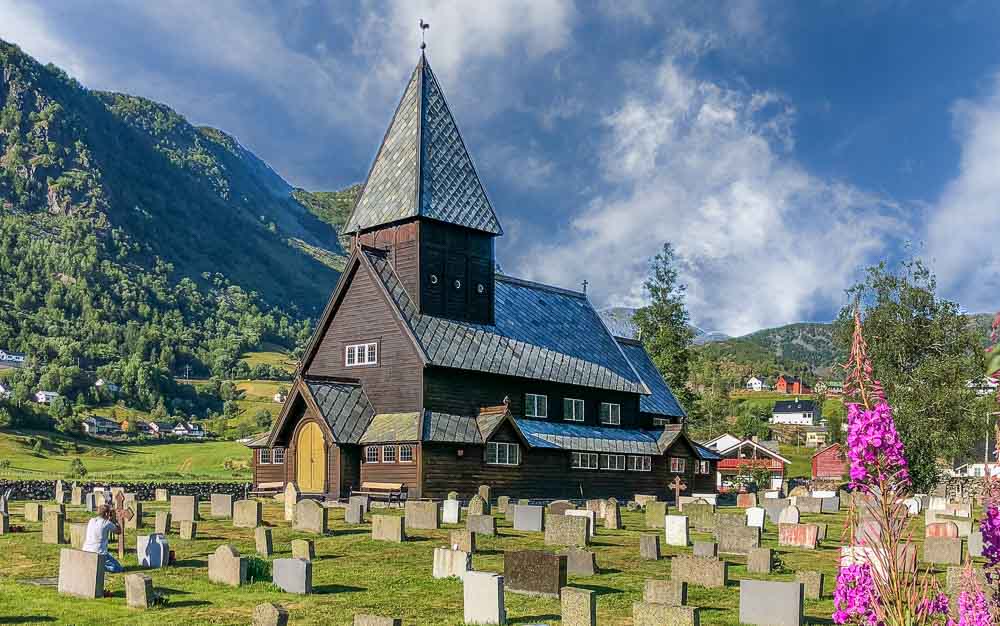
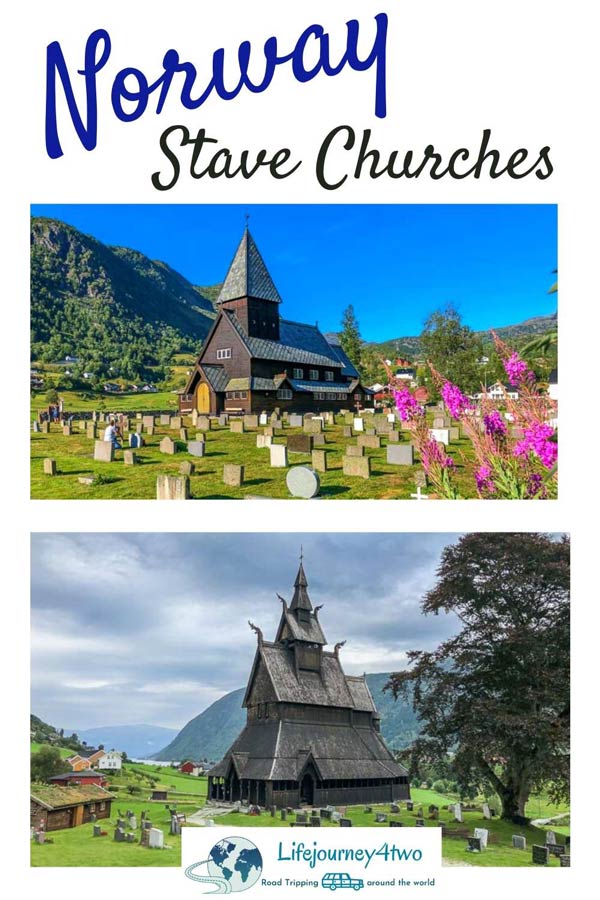
This is an informative and interesting article. We would like to see these in person.
Thanks, Tom, The Norwegian stave churches are so intriguing – we hope you get to see them up close and personal some day.